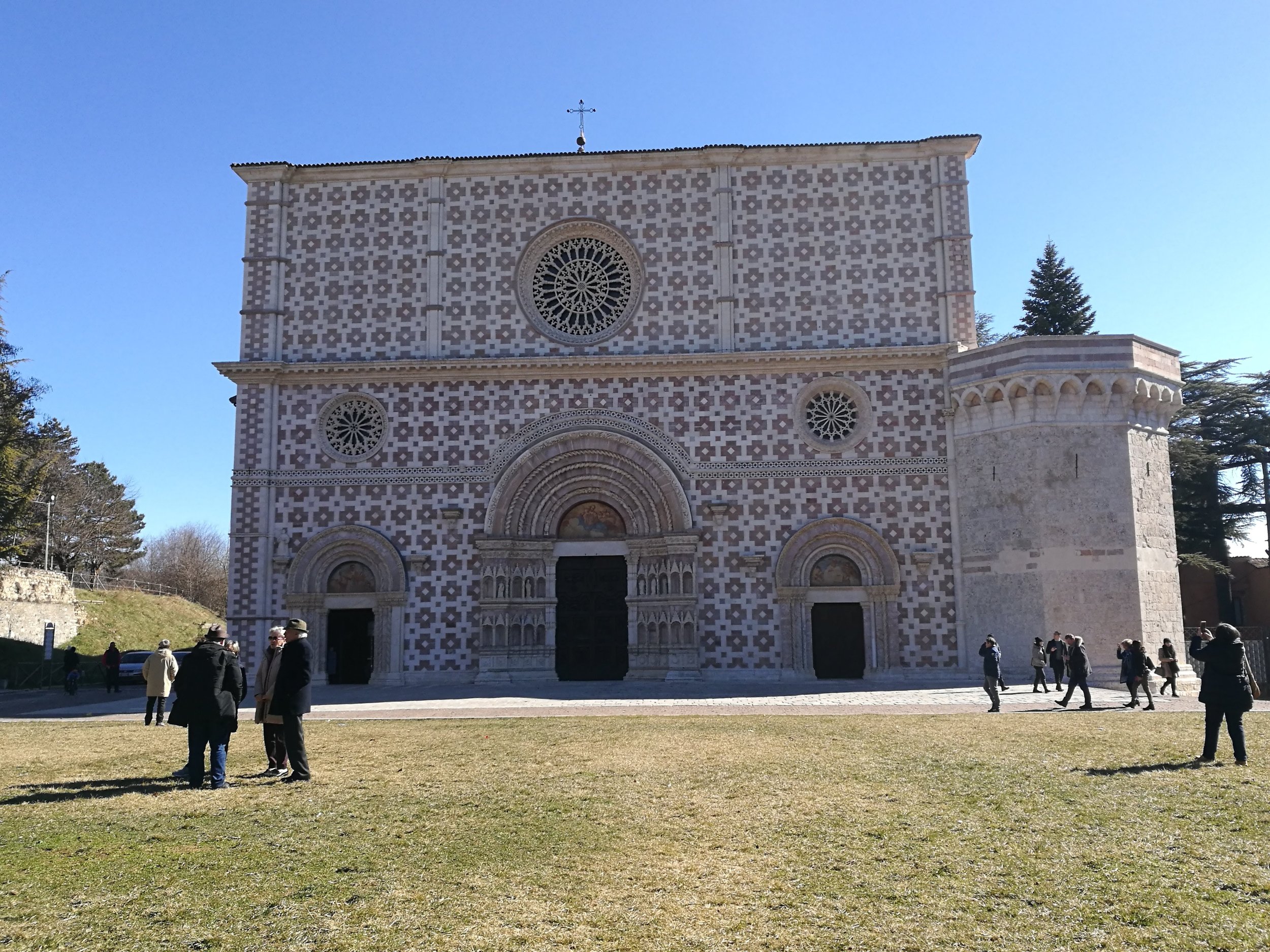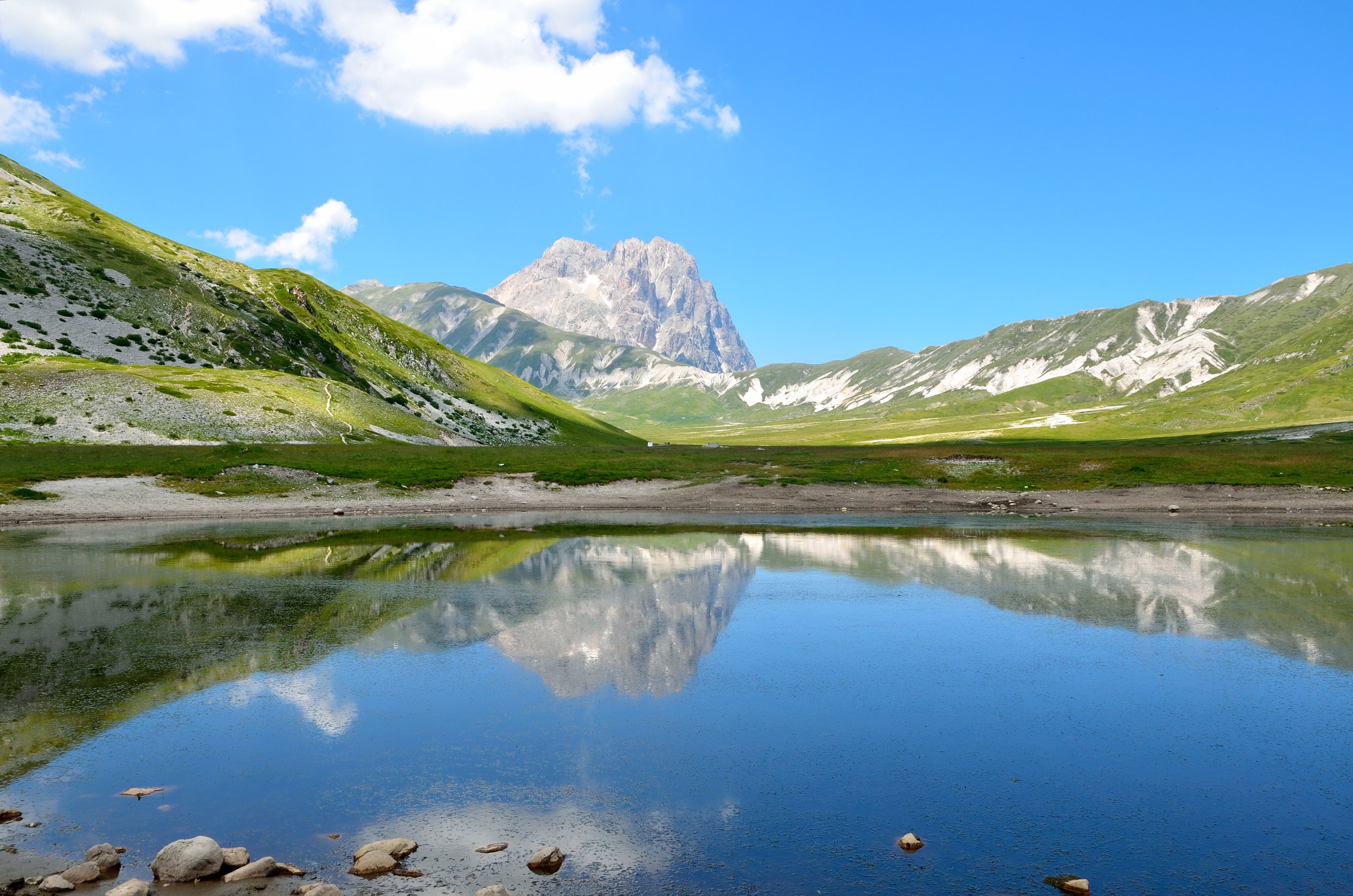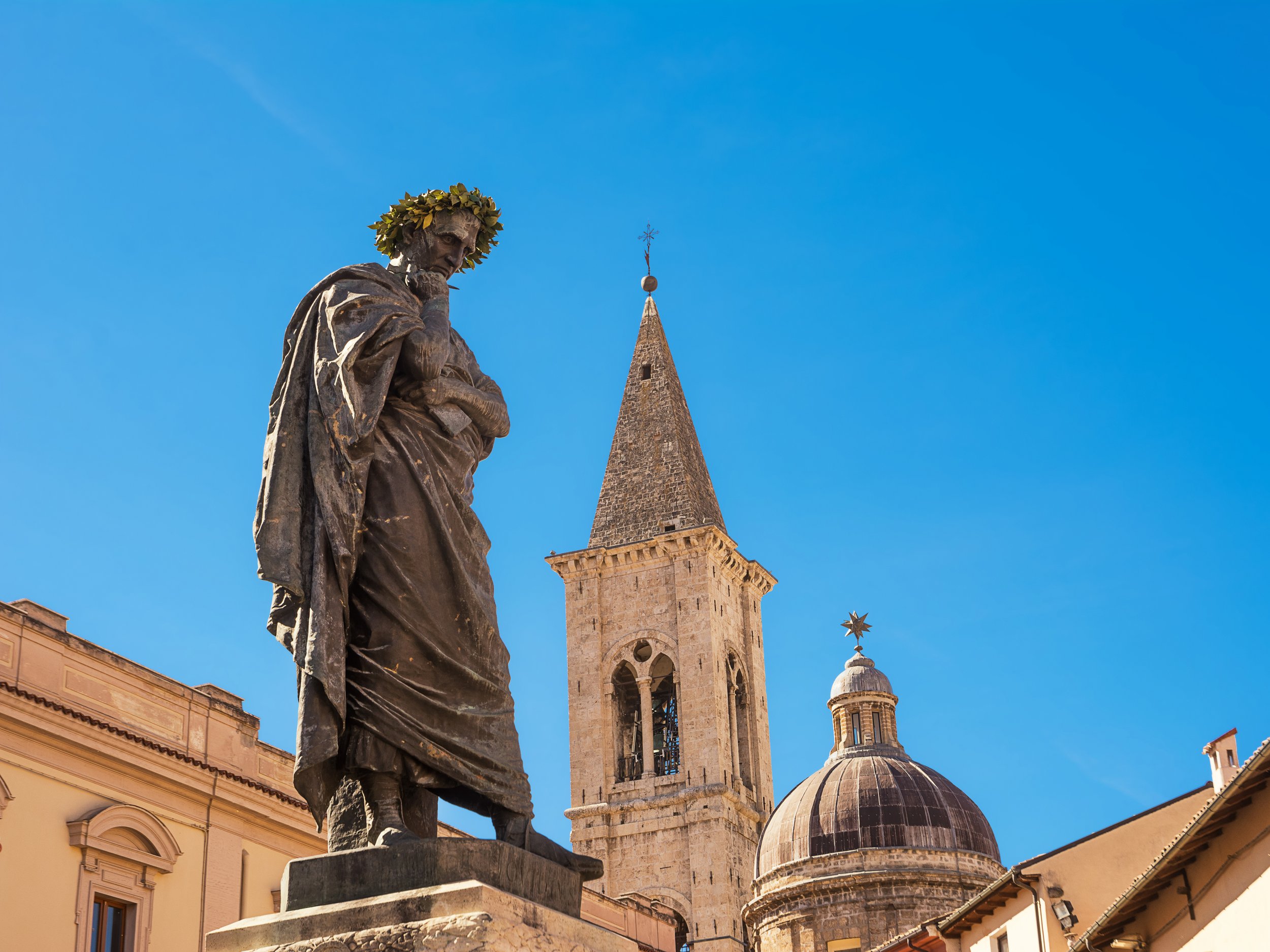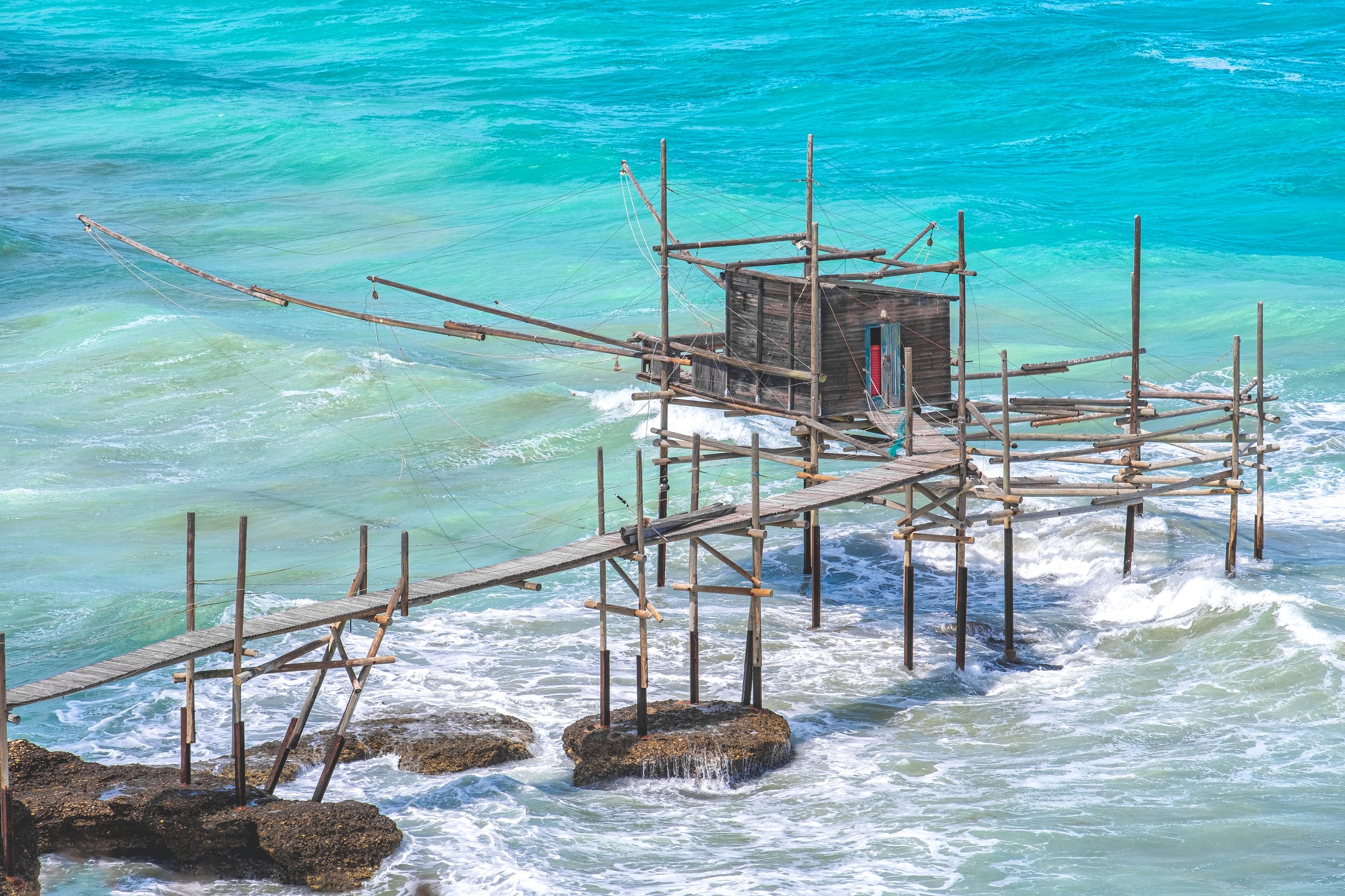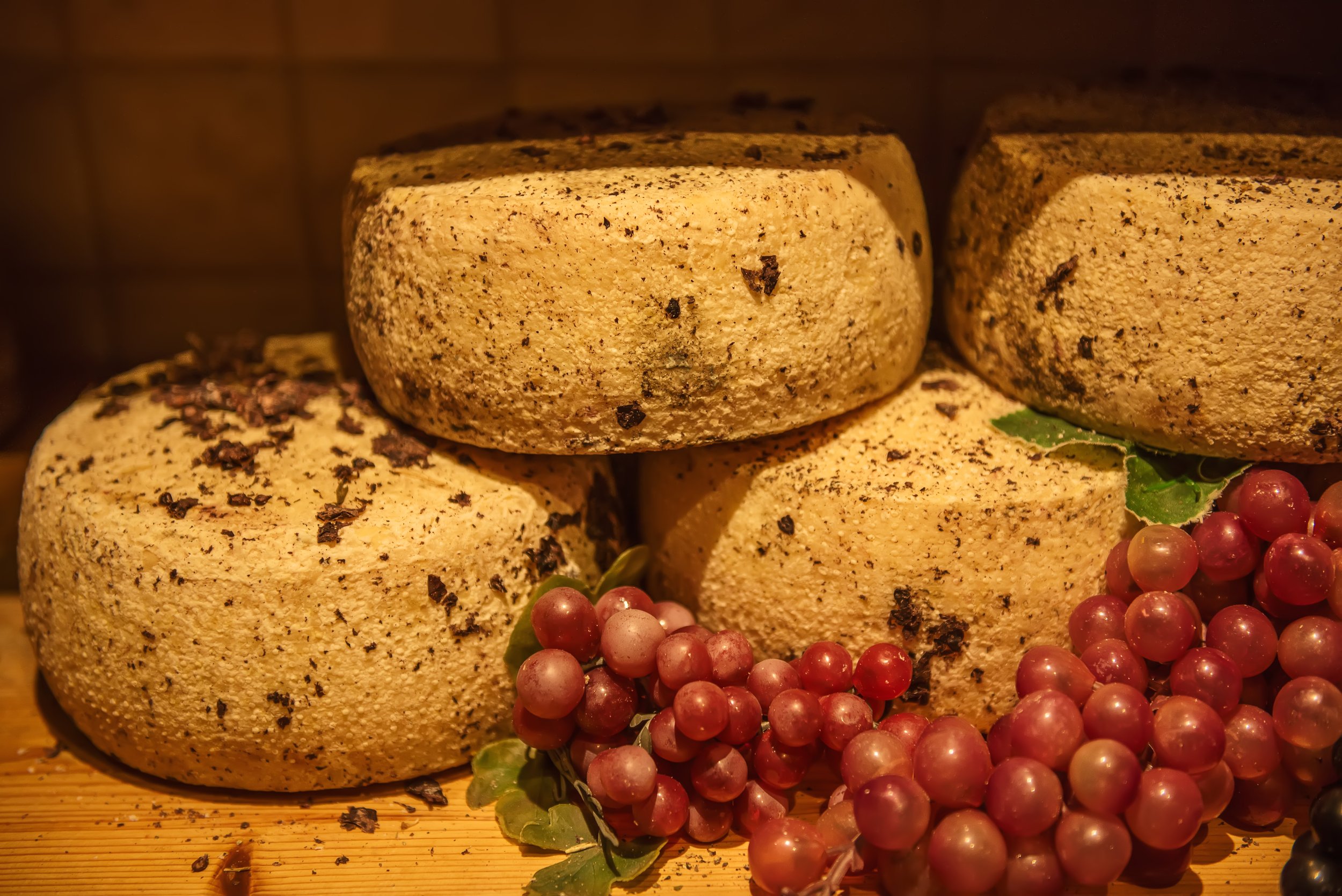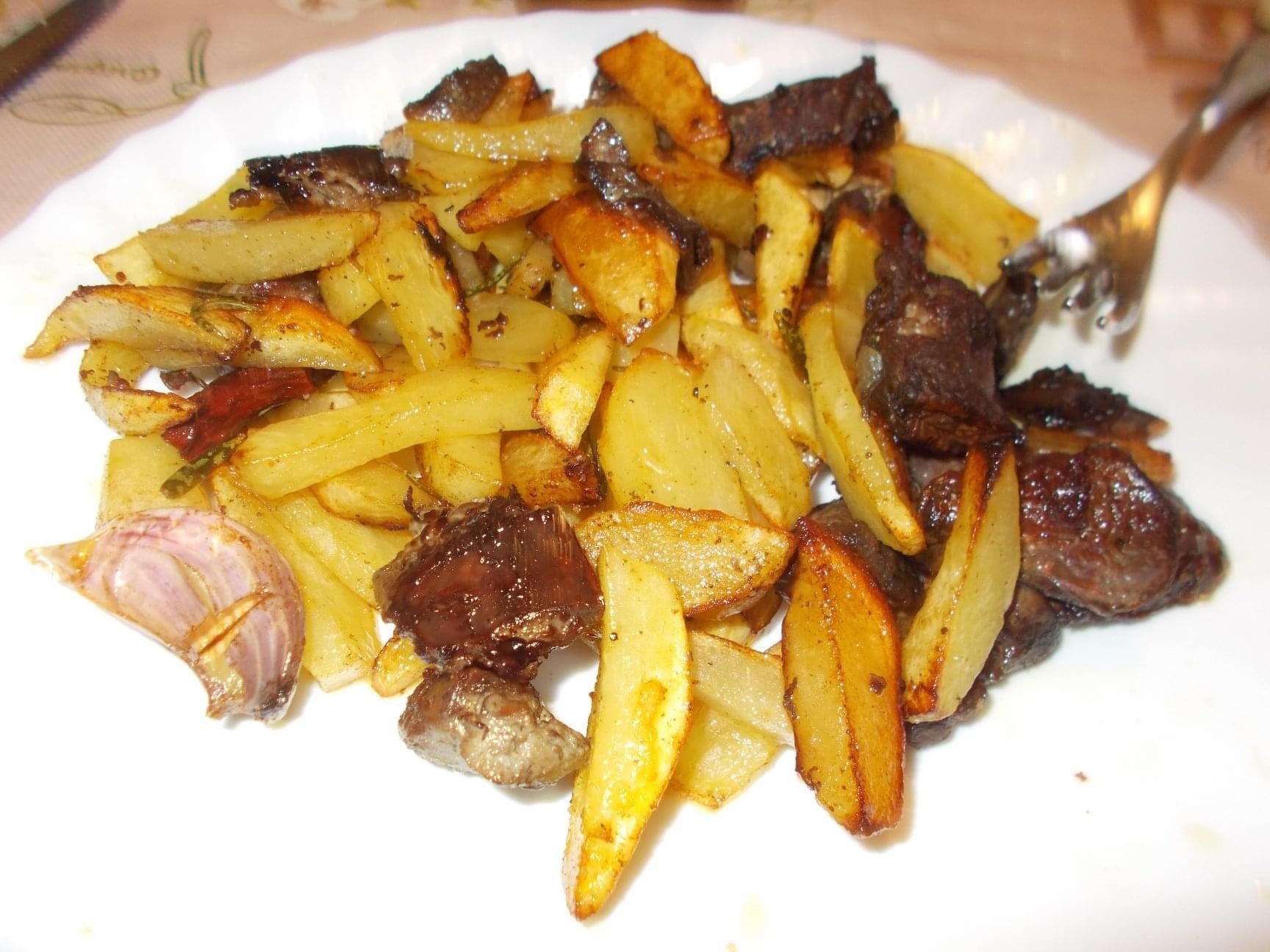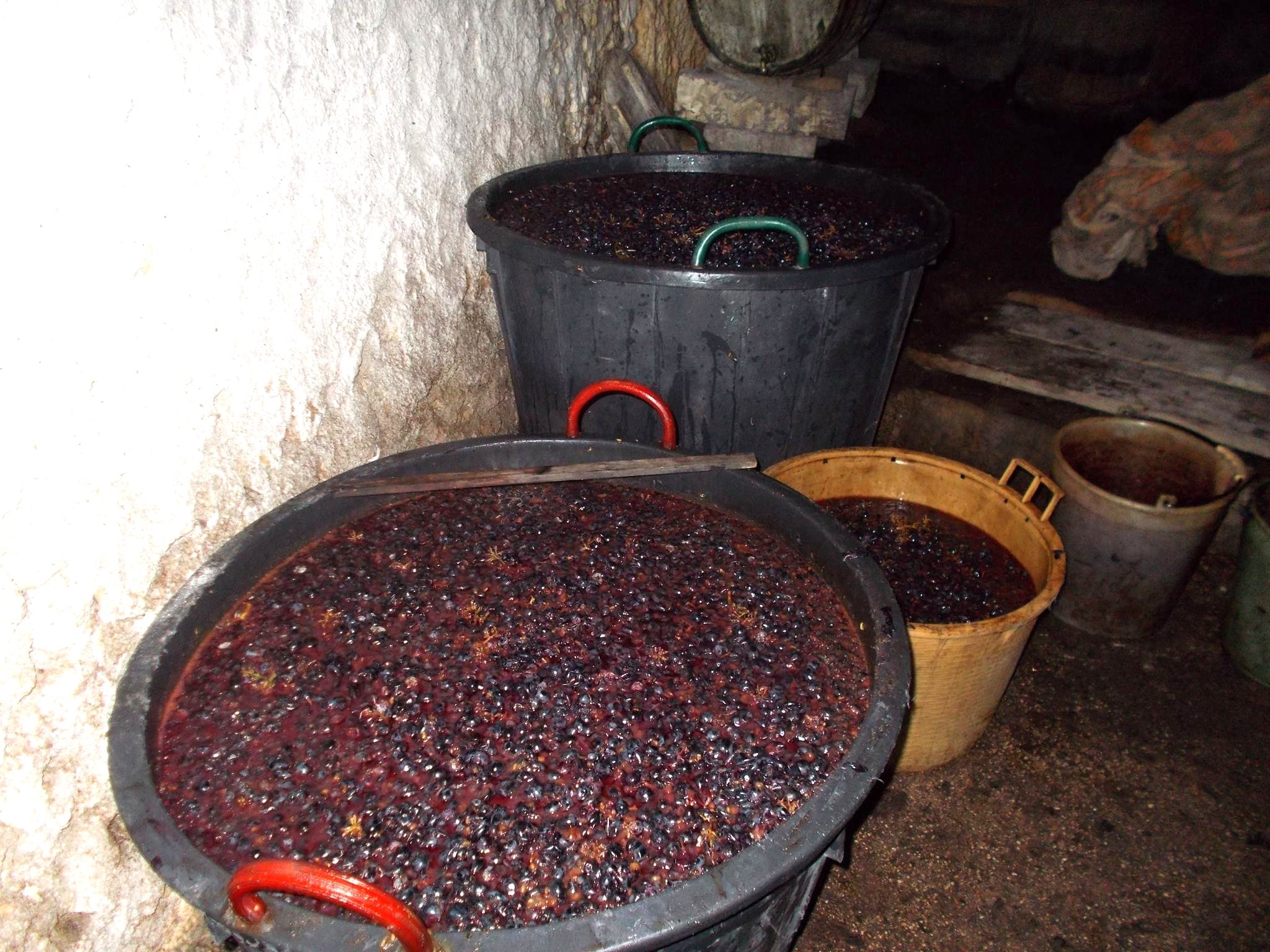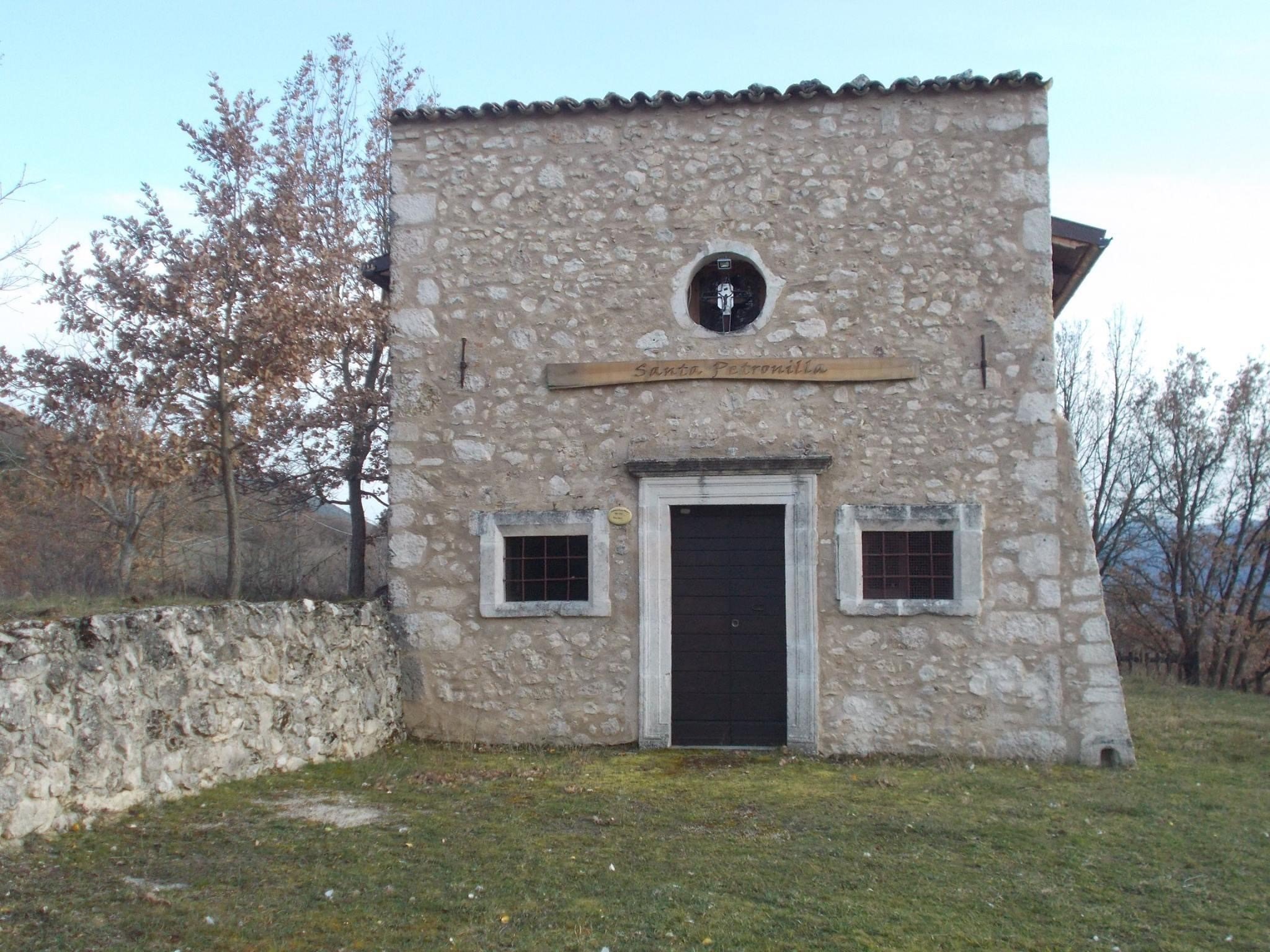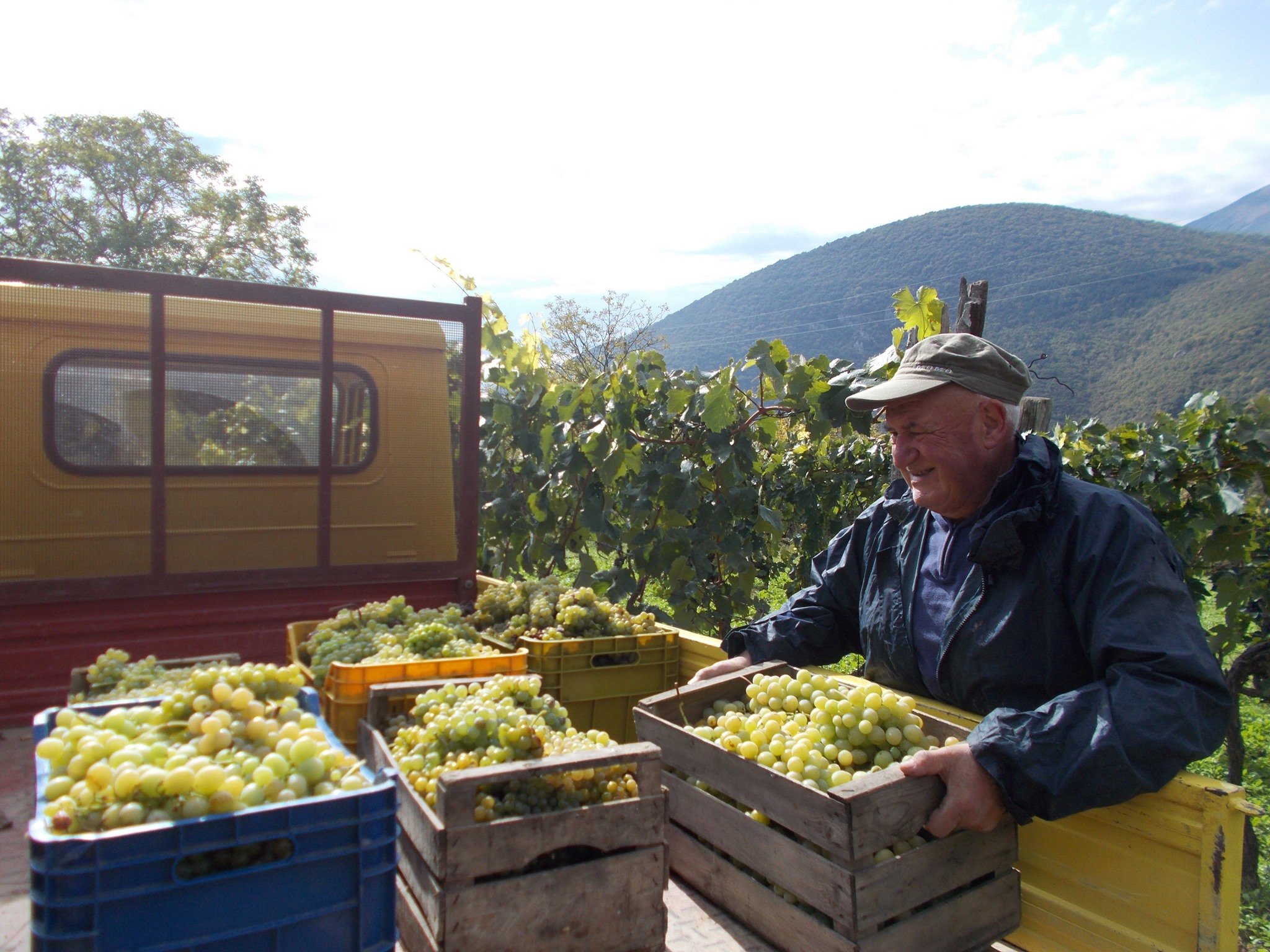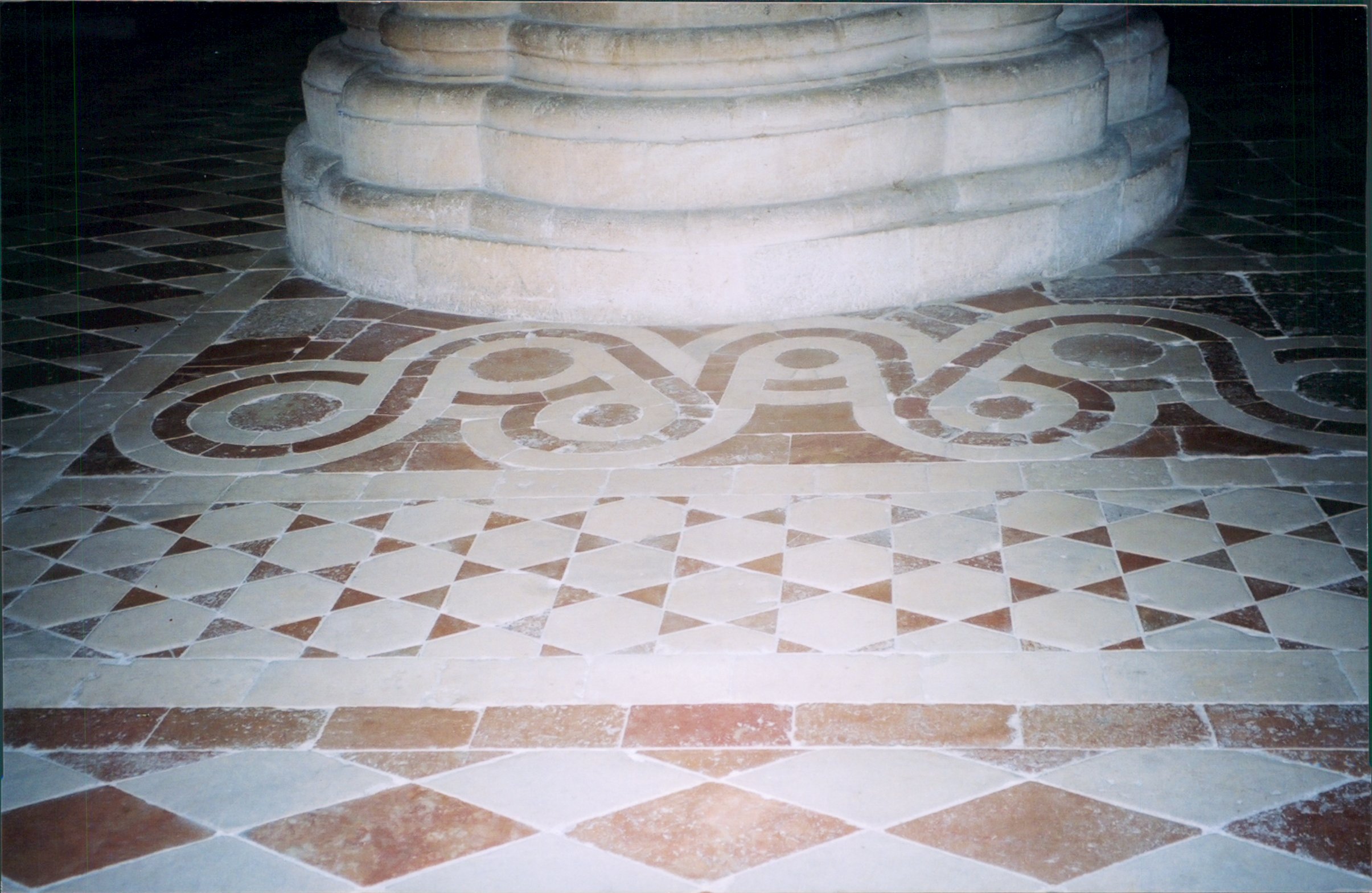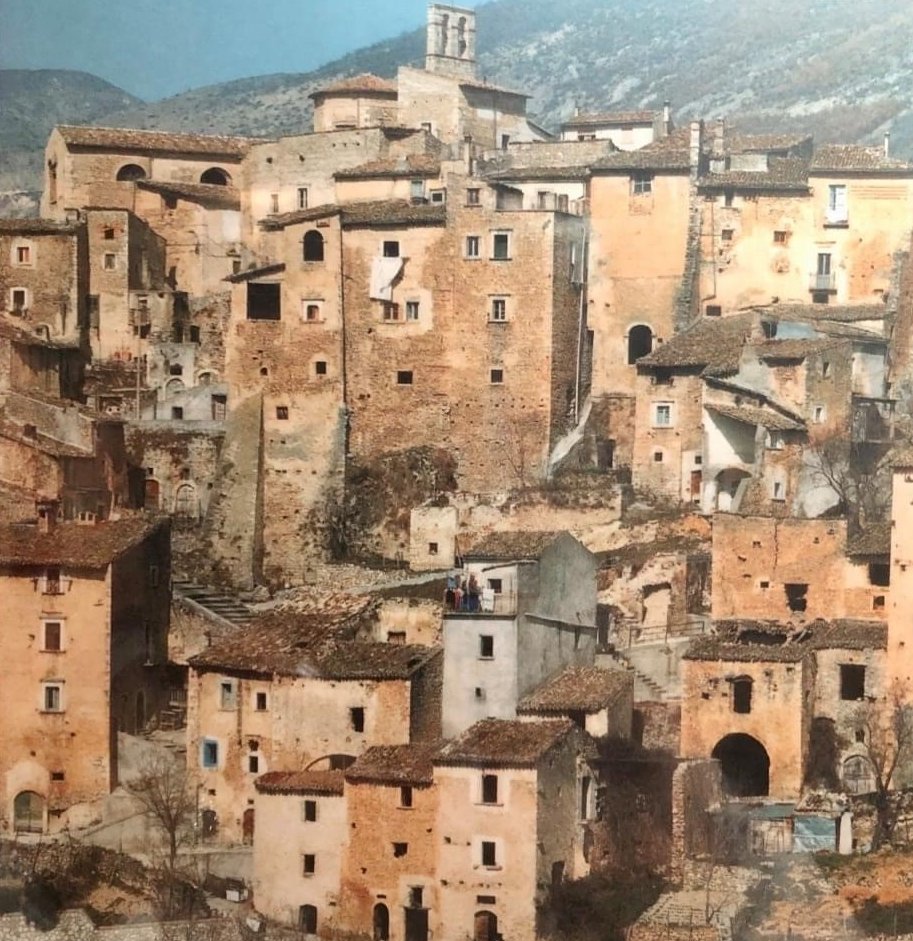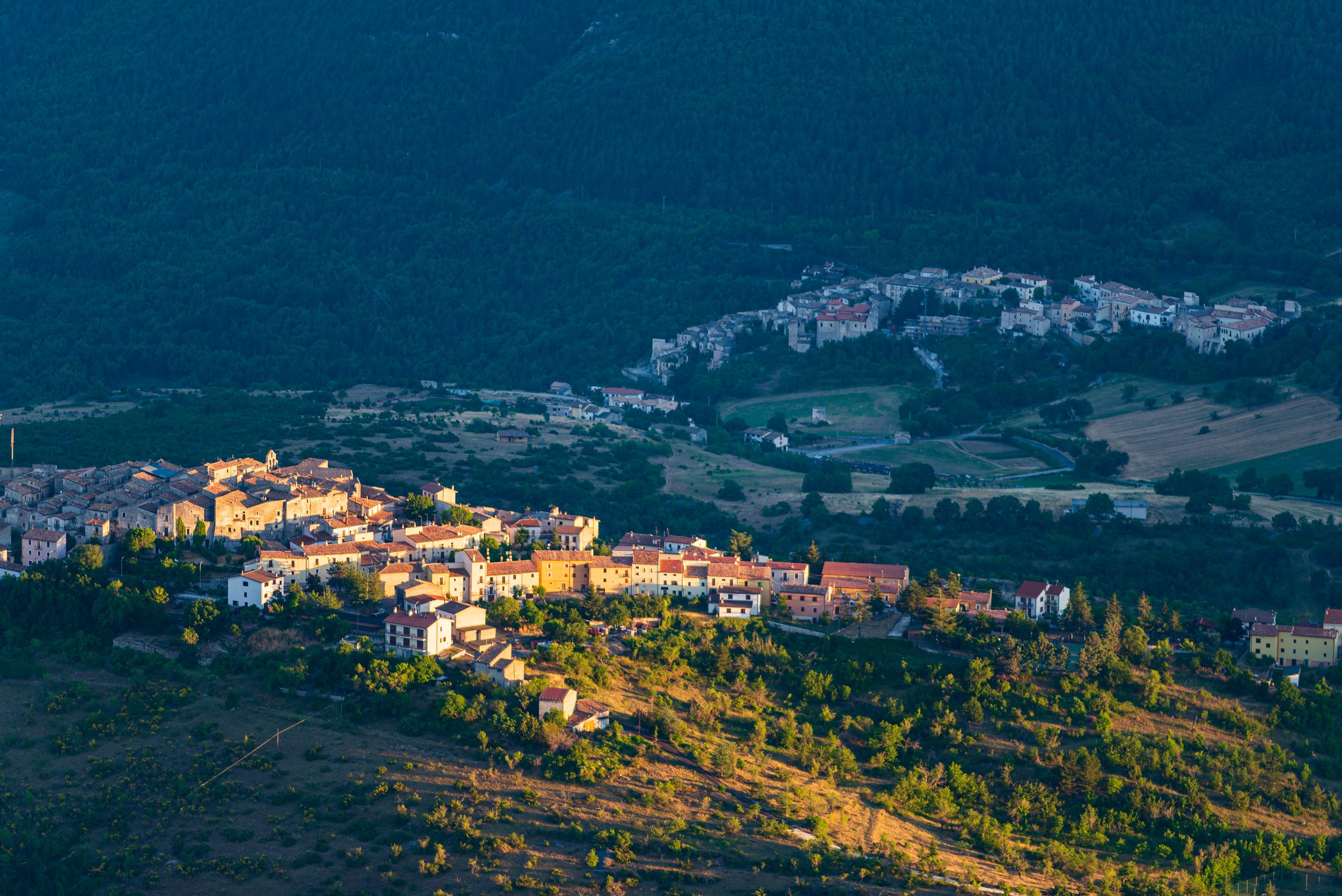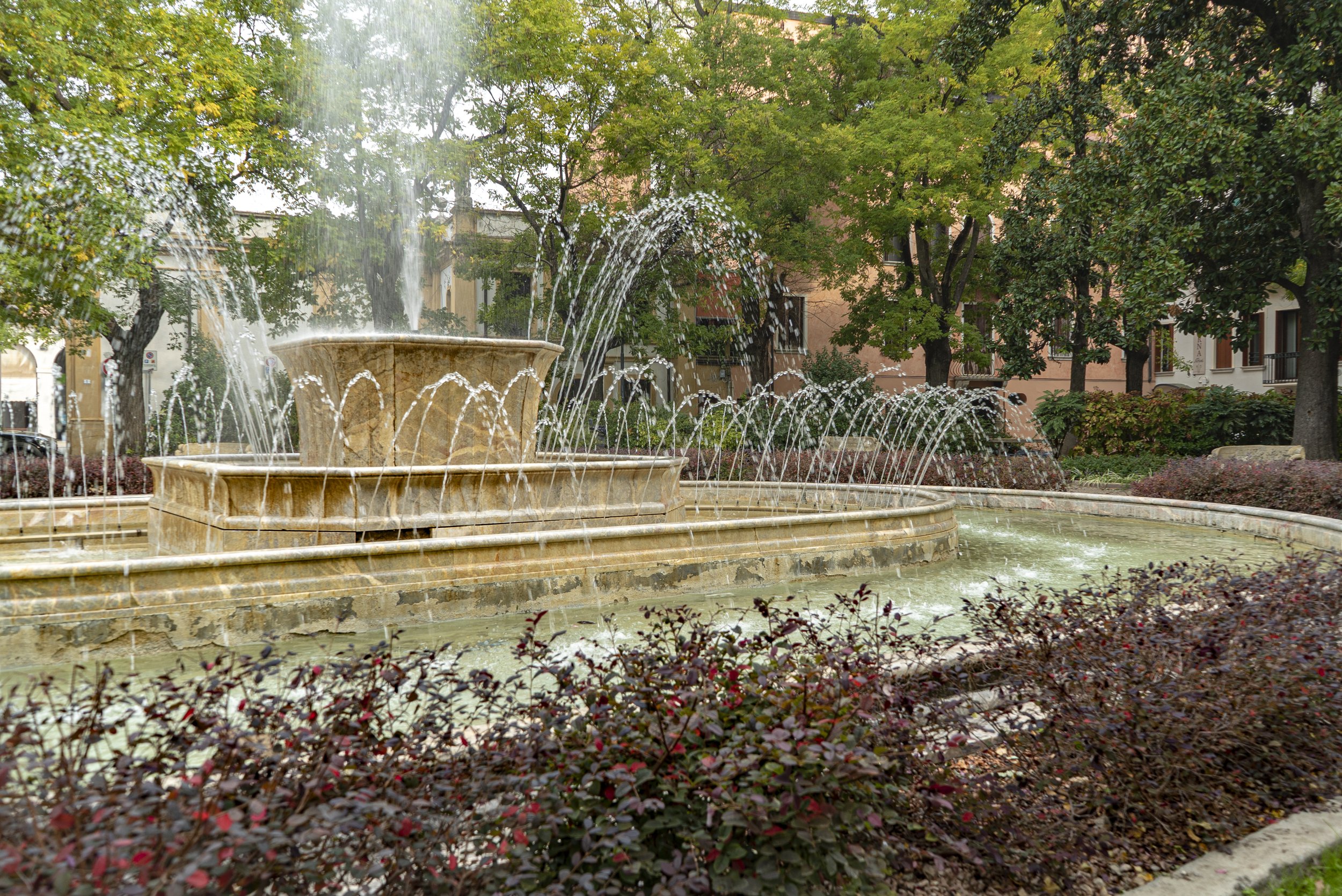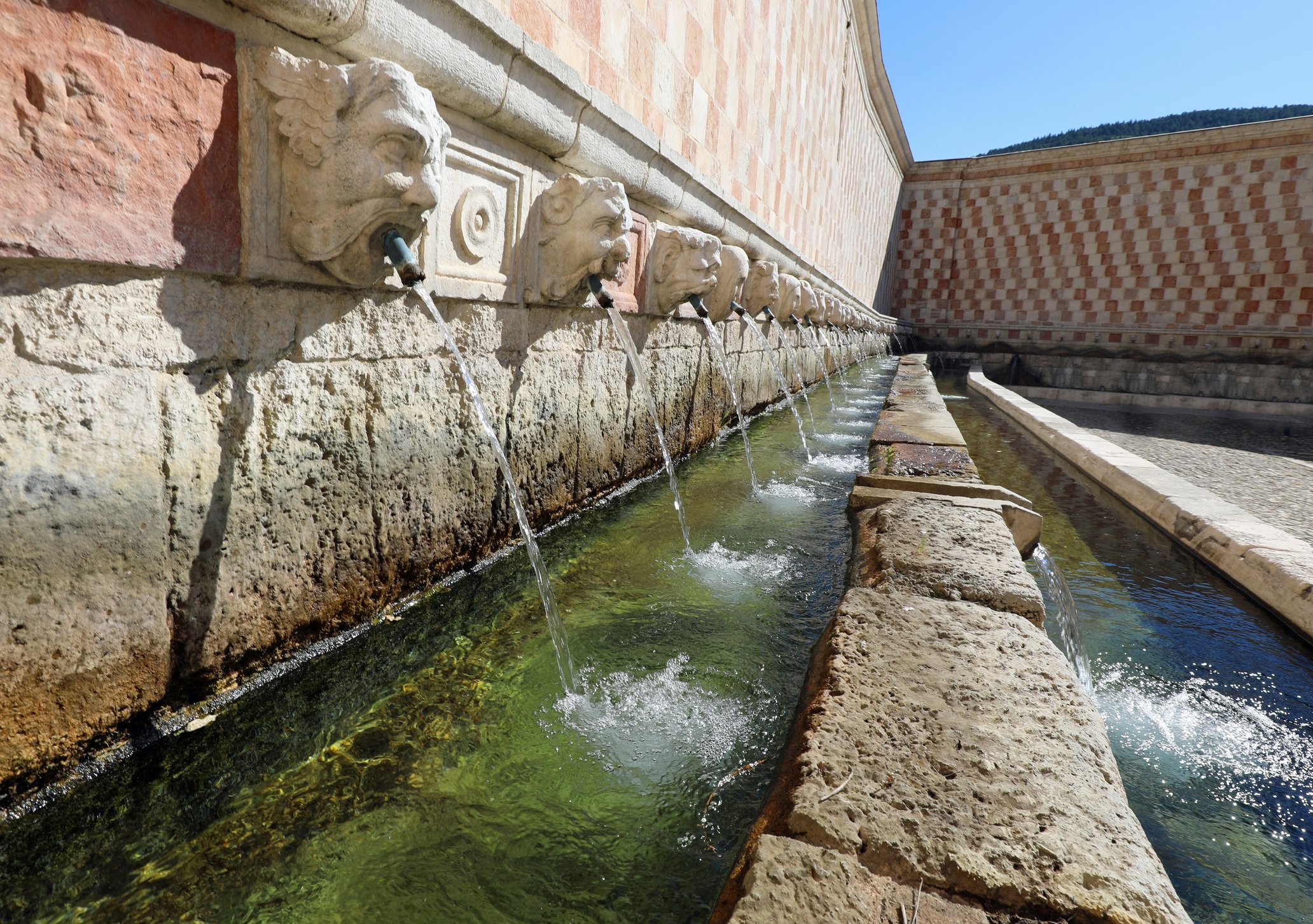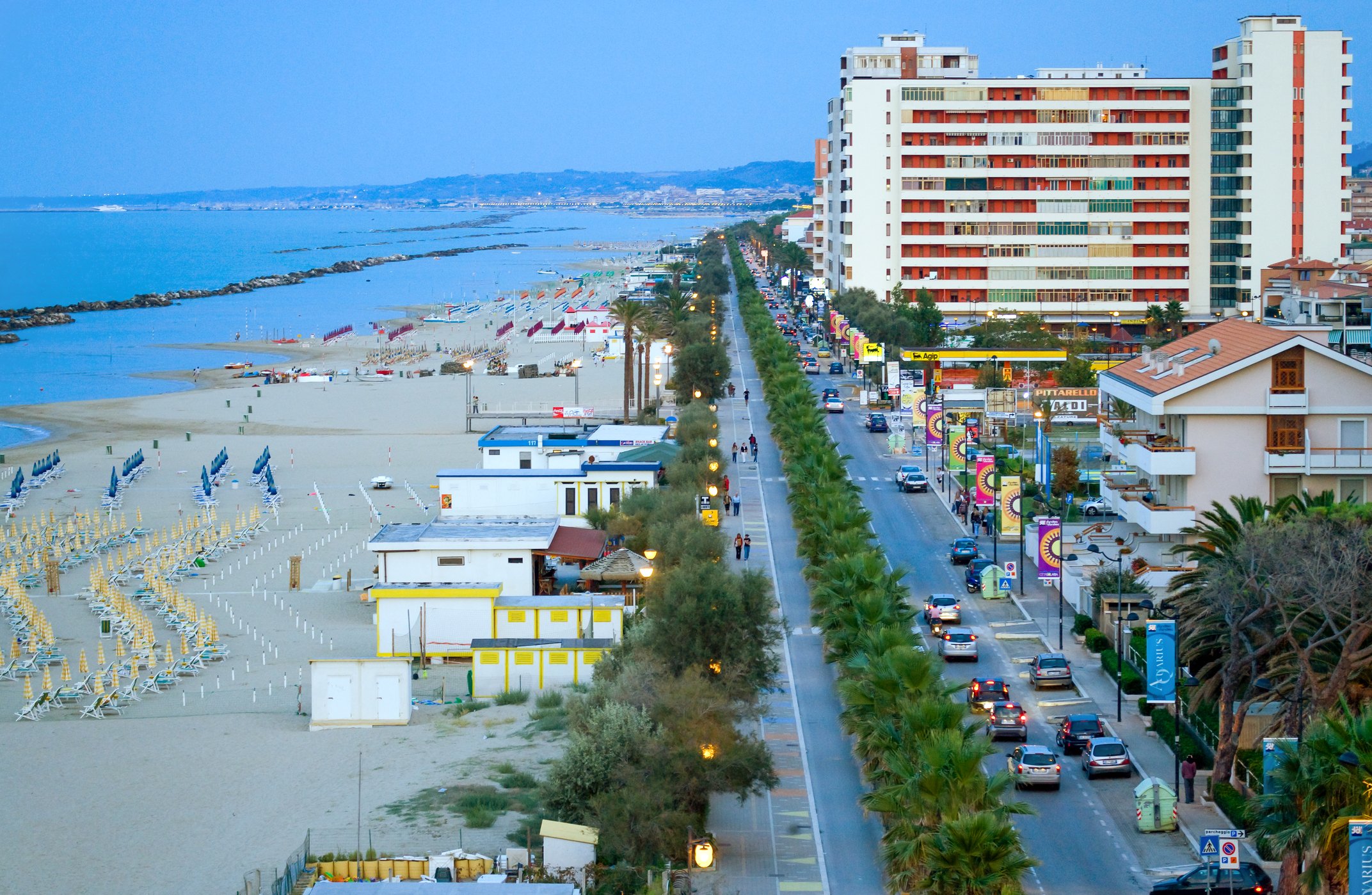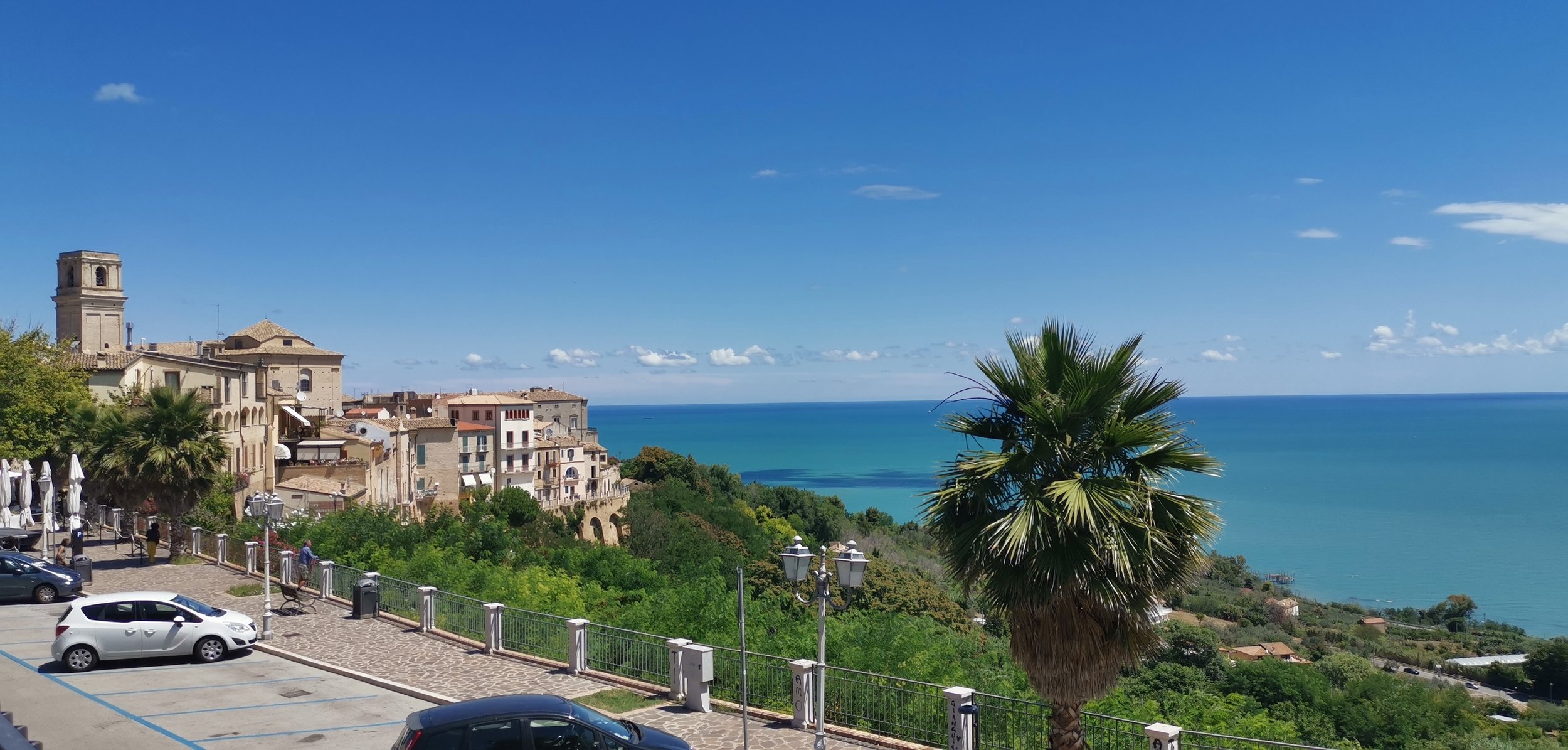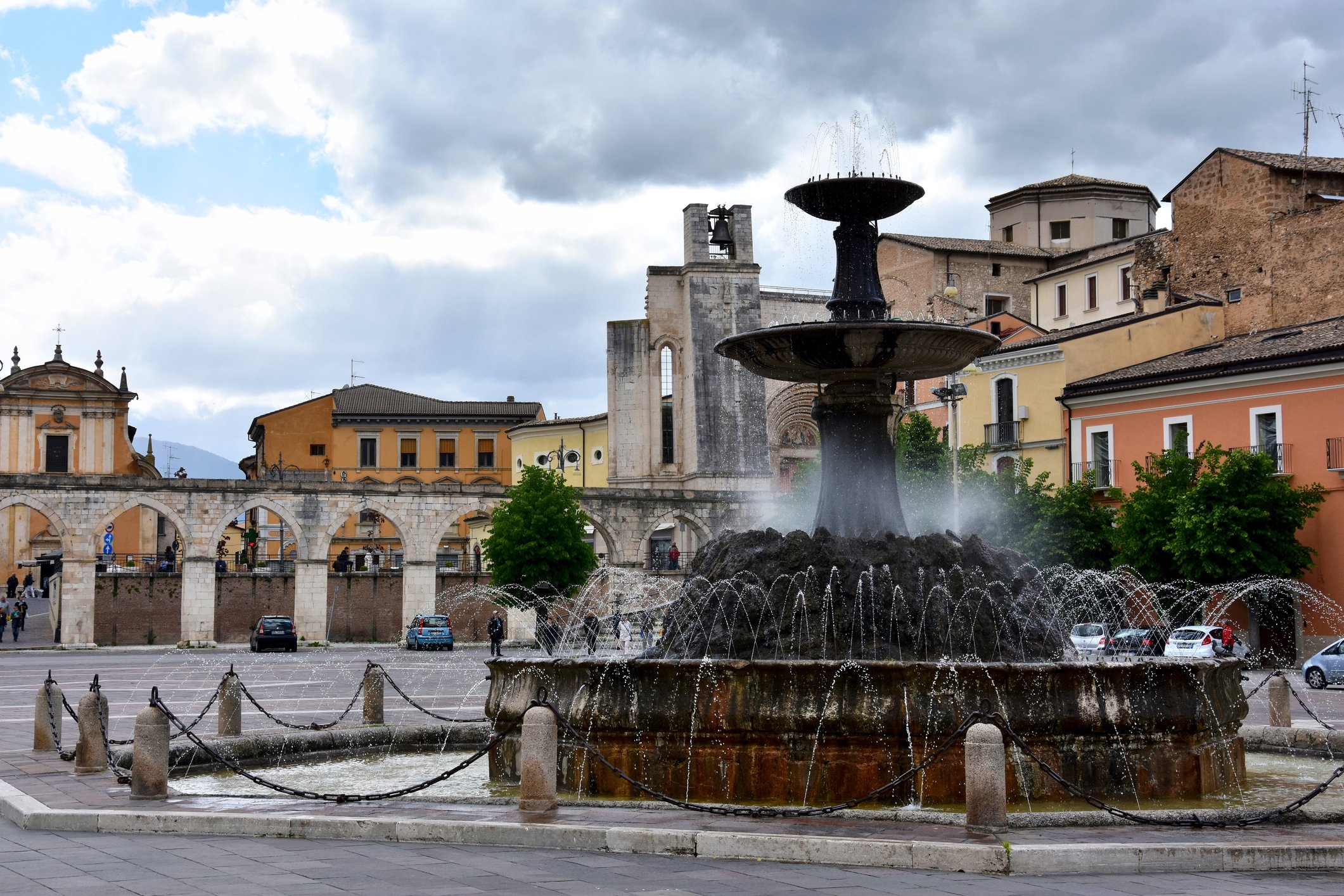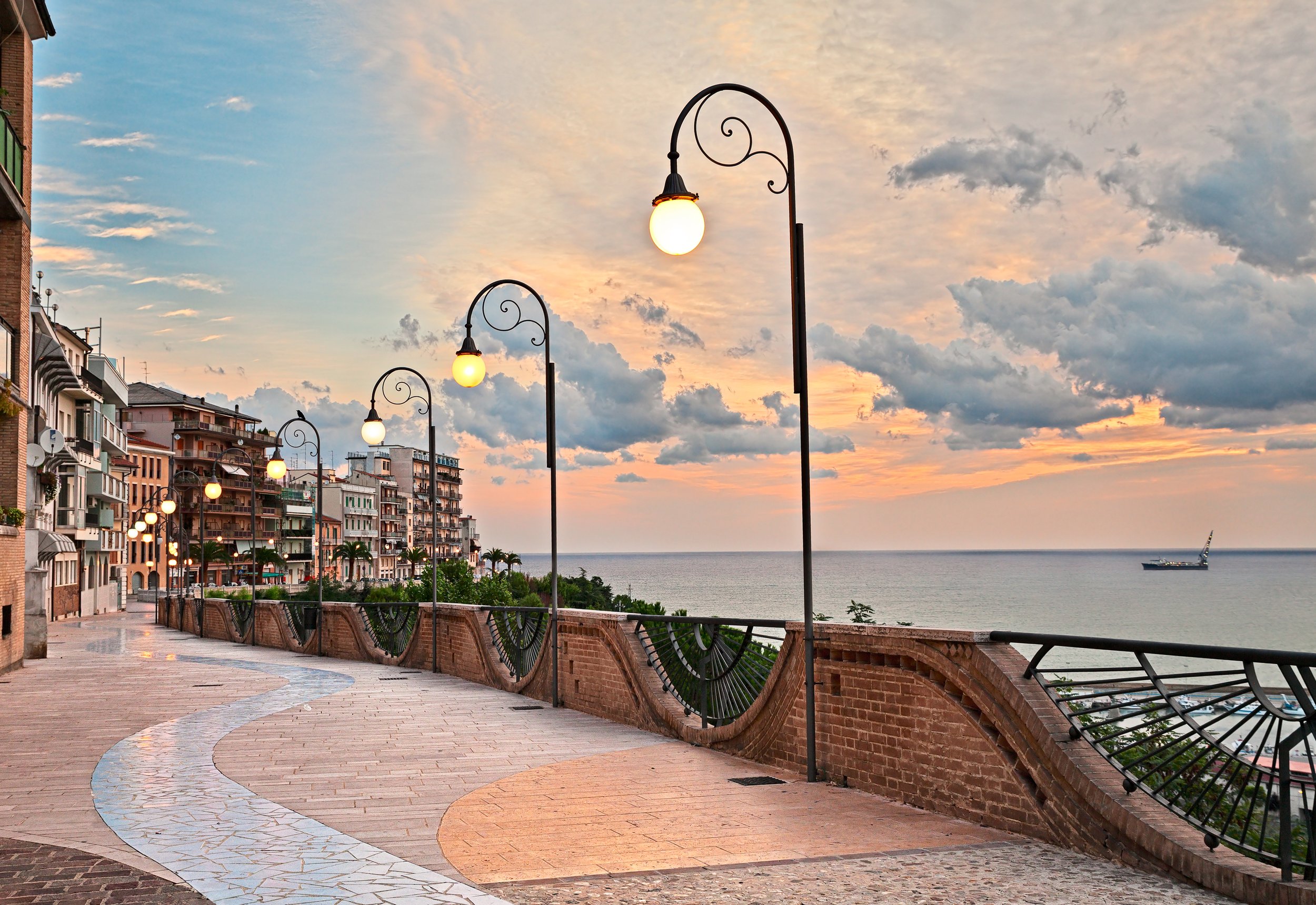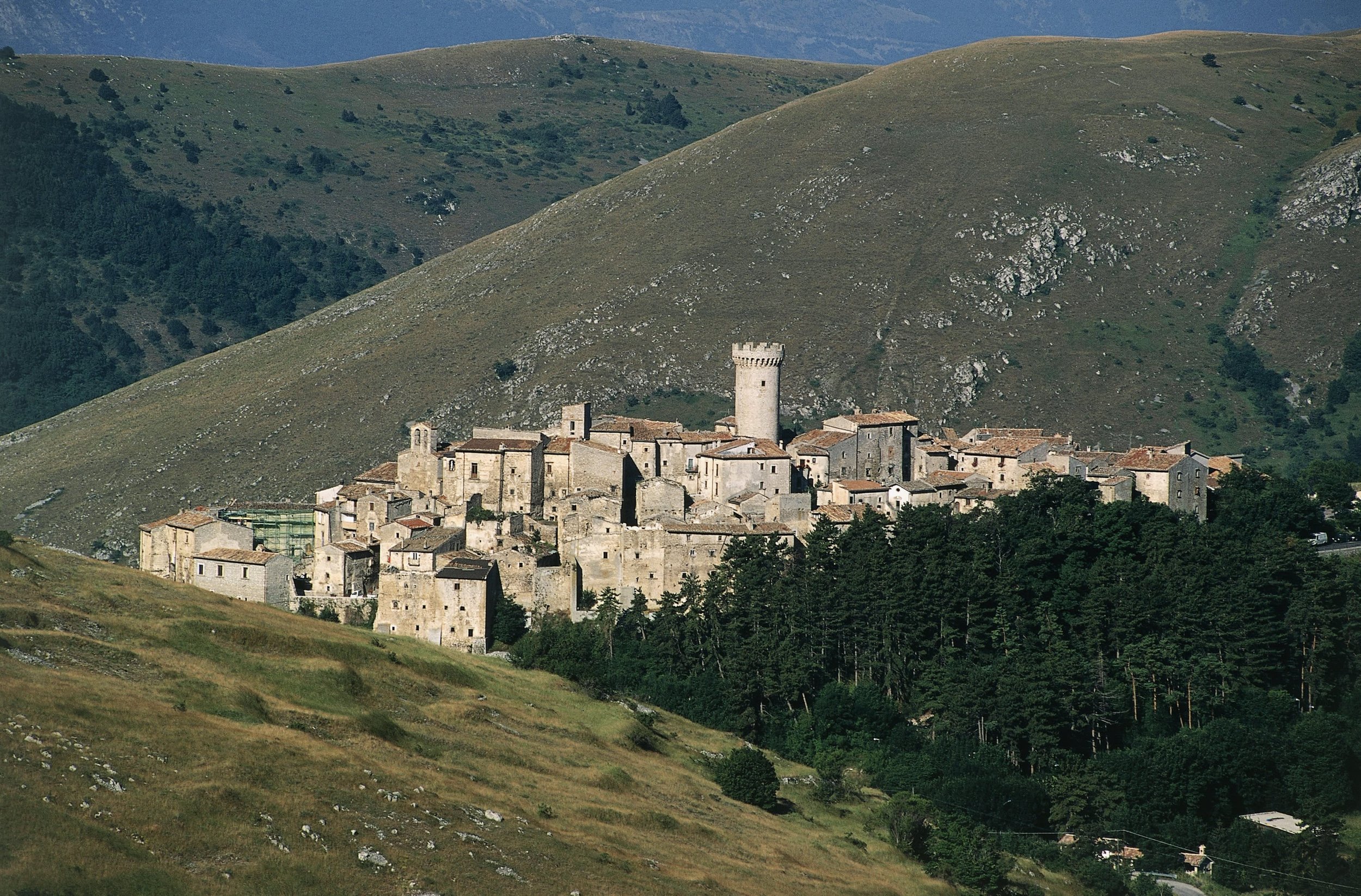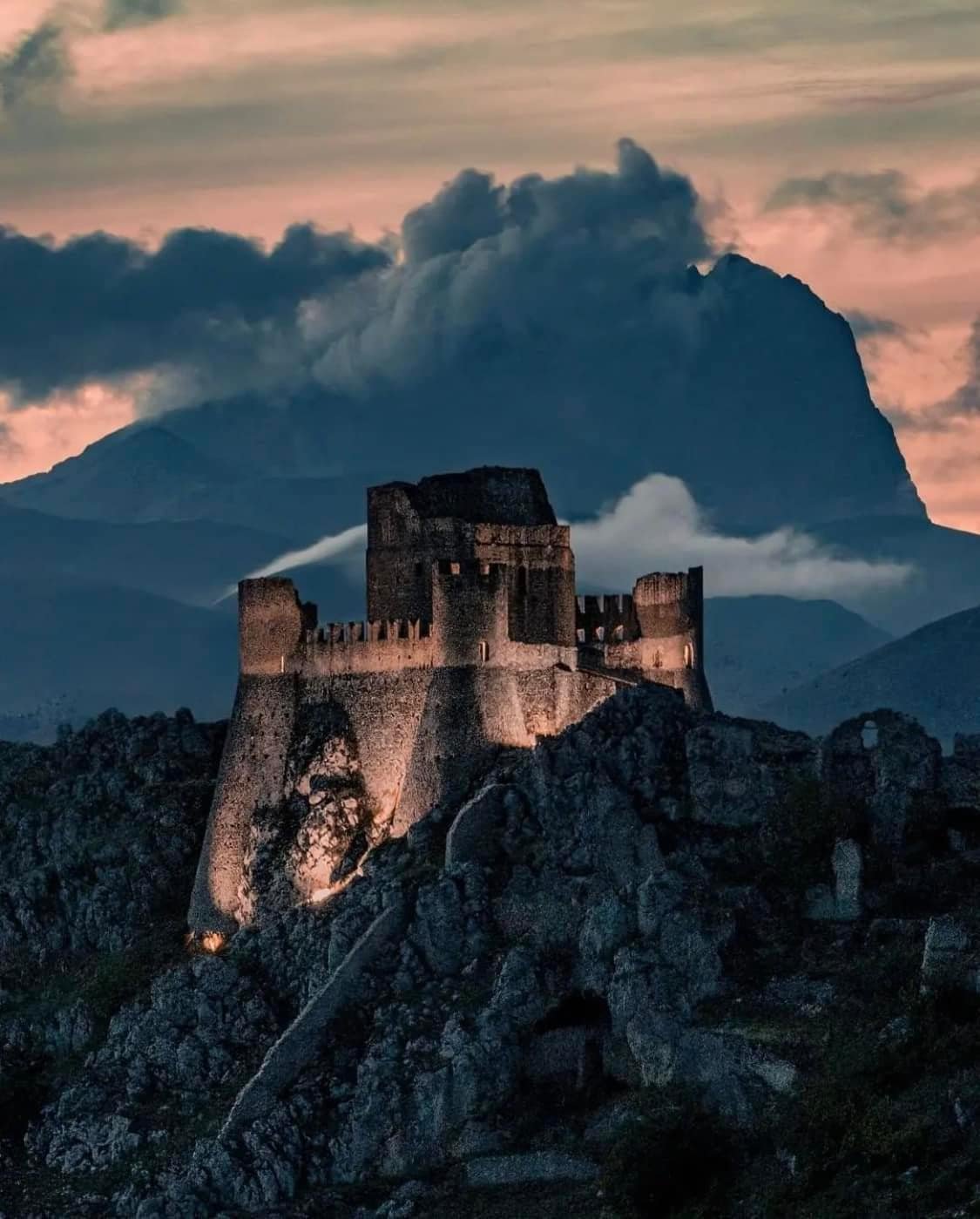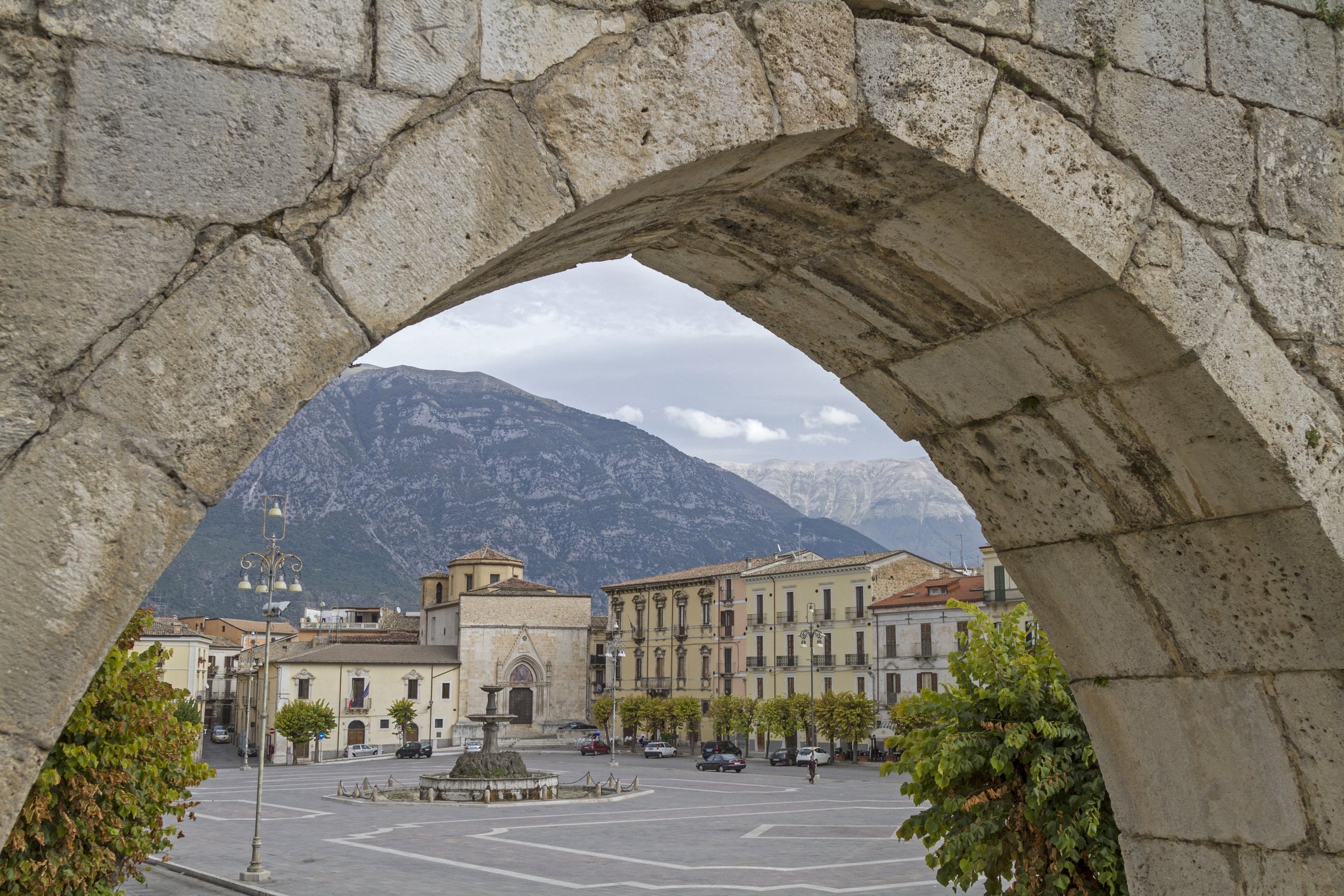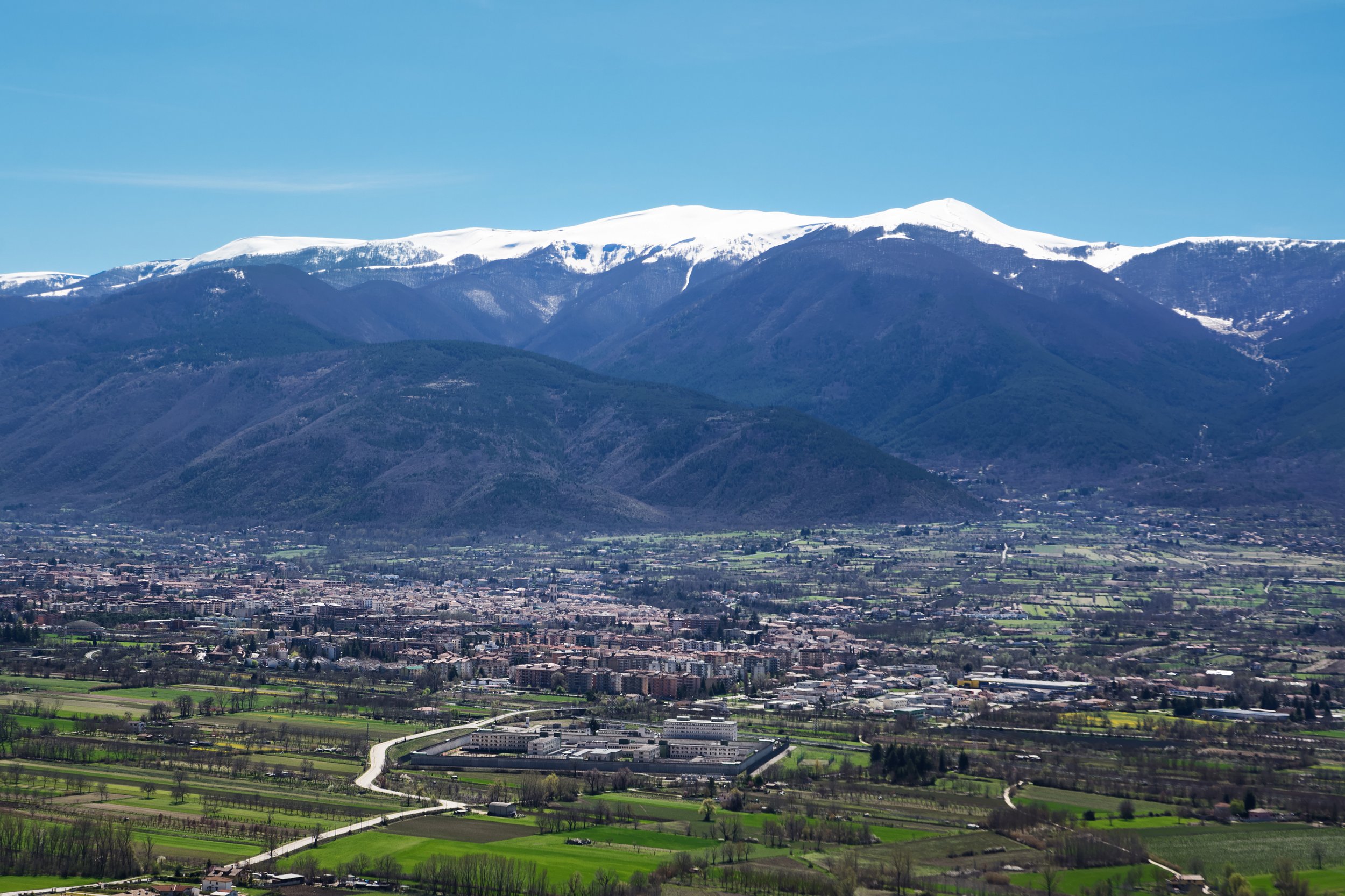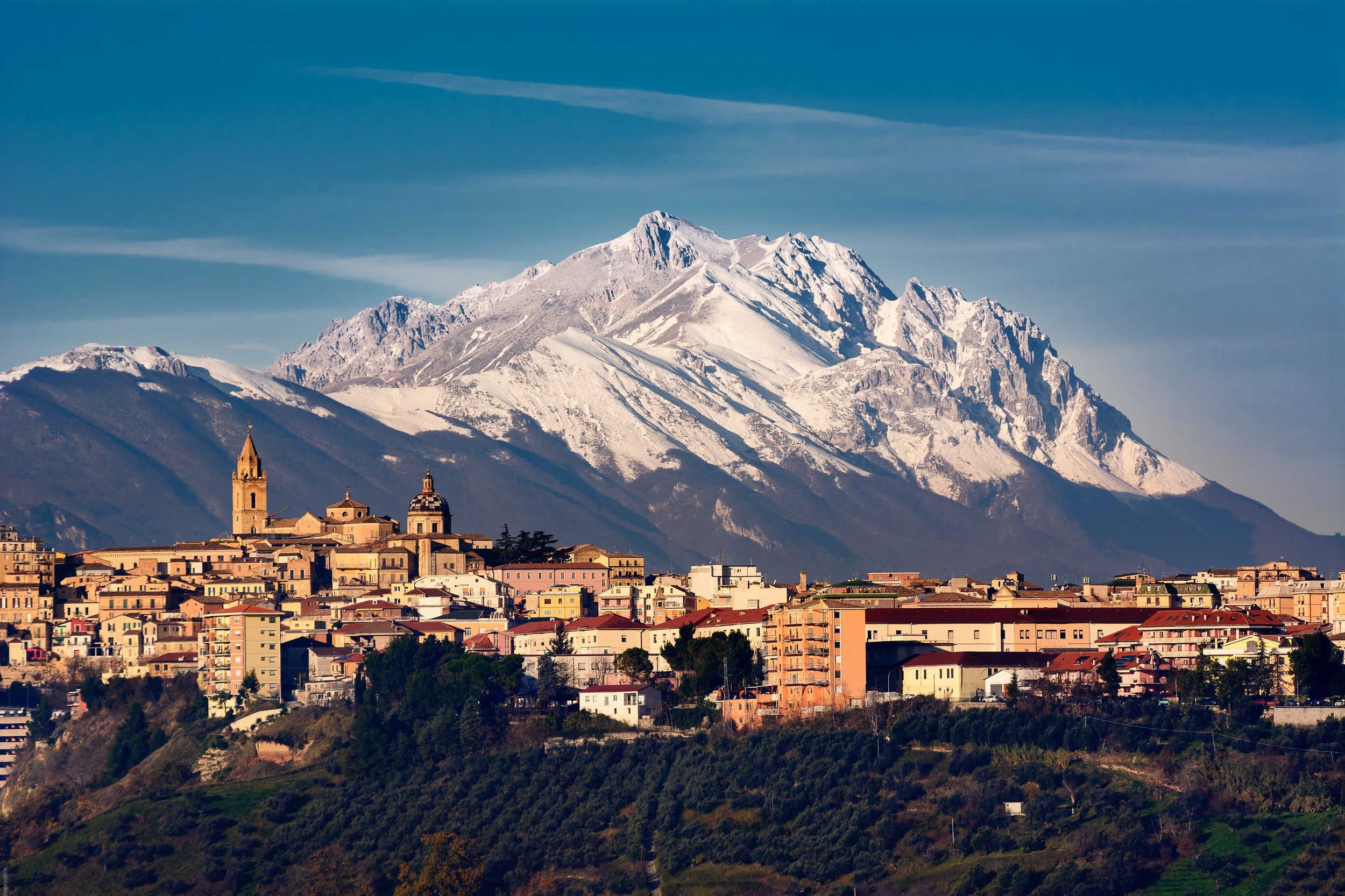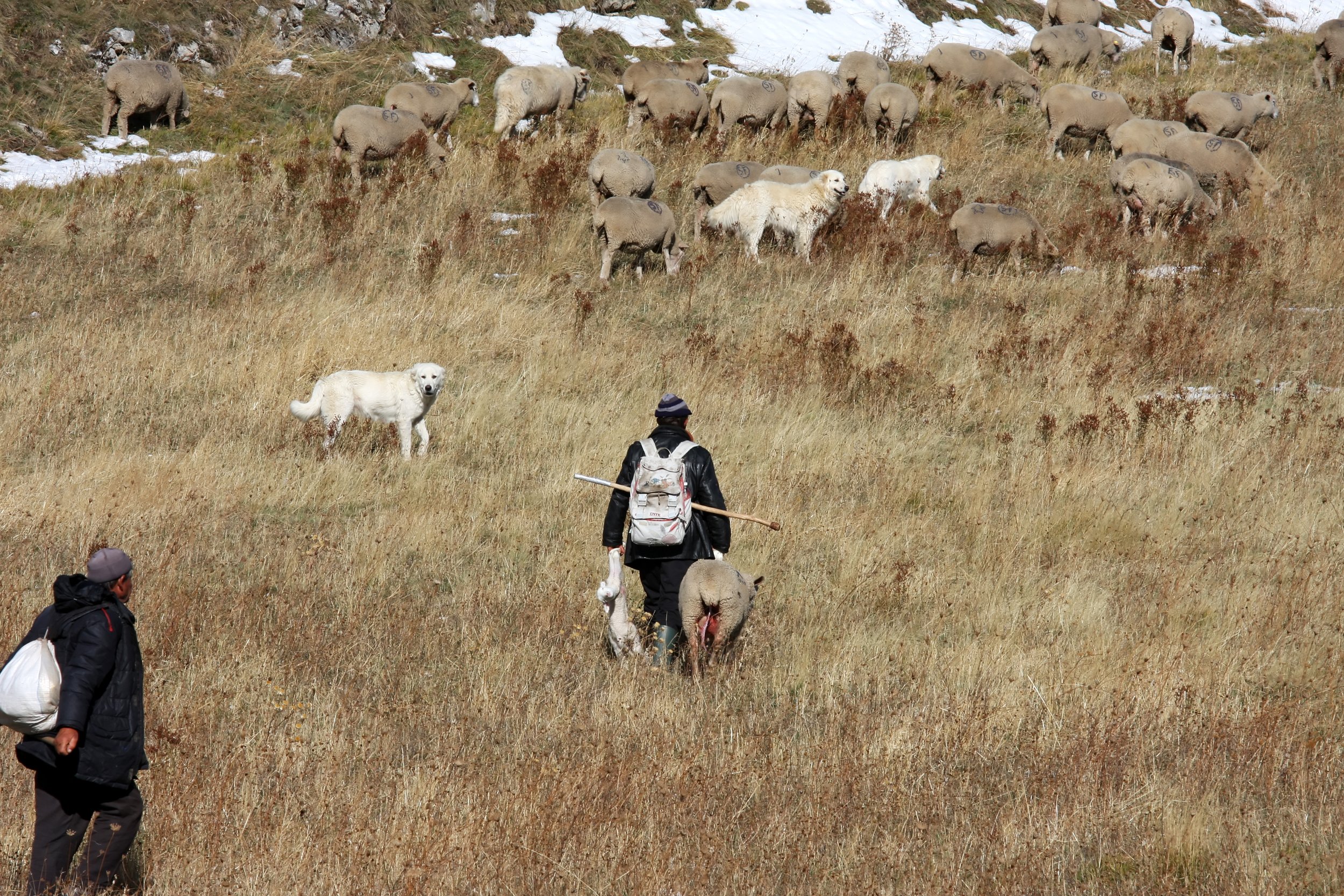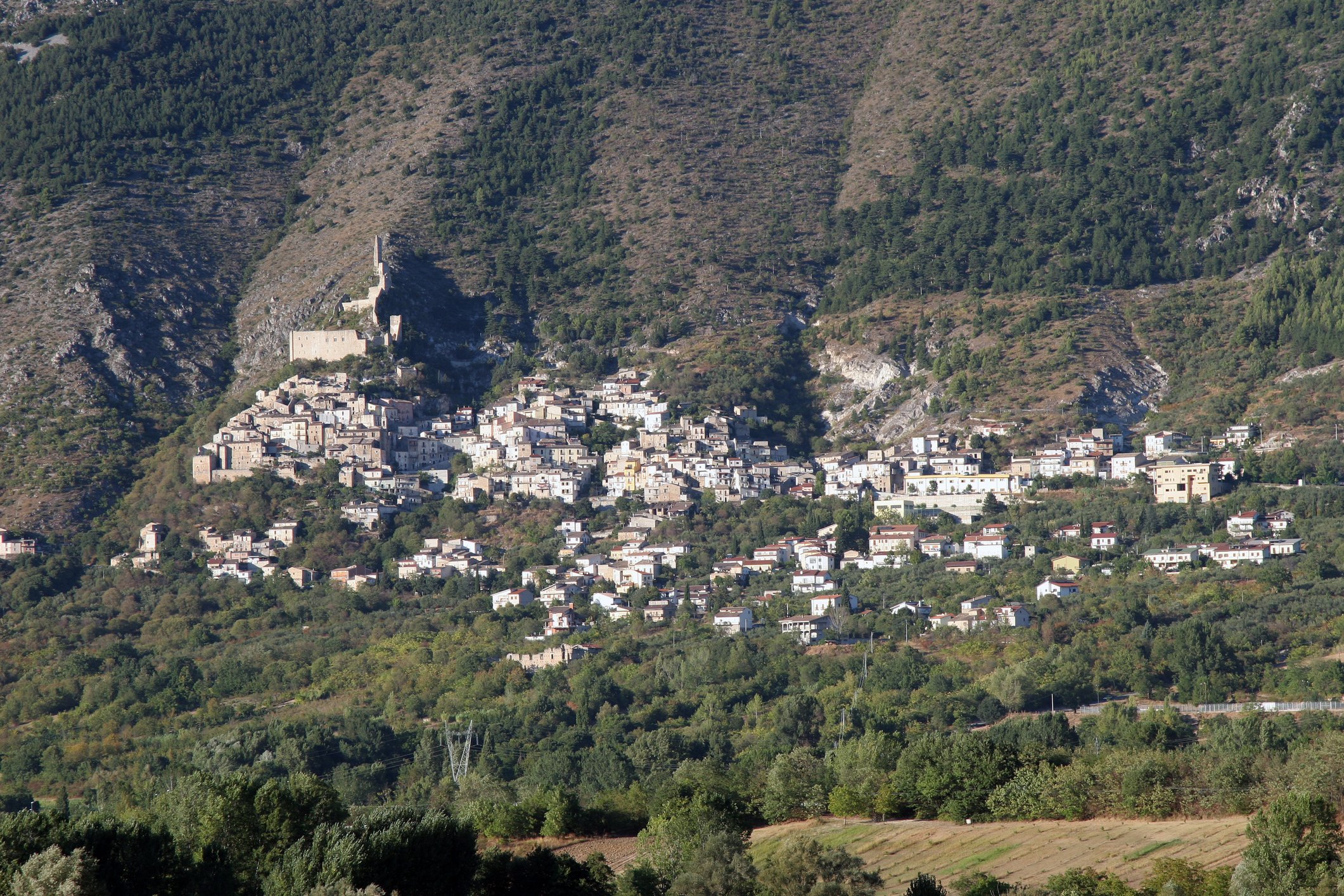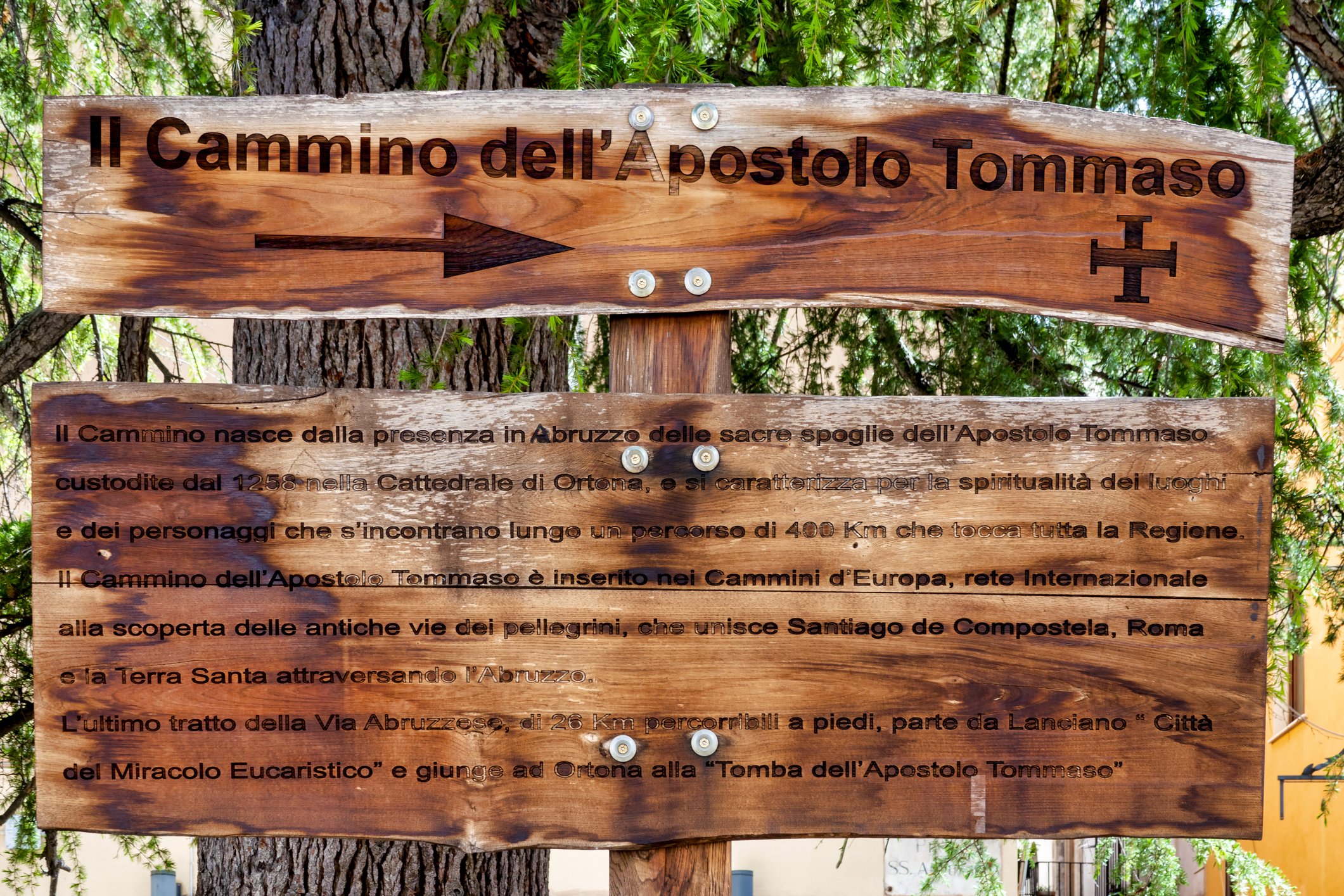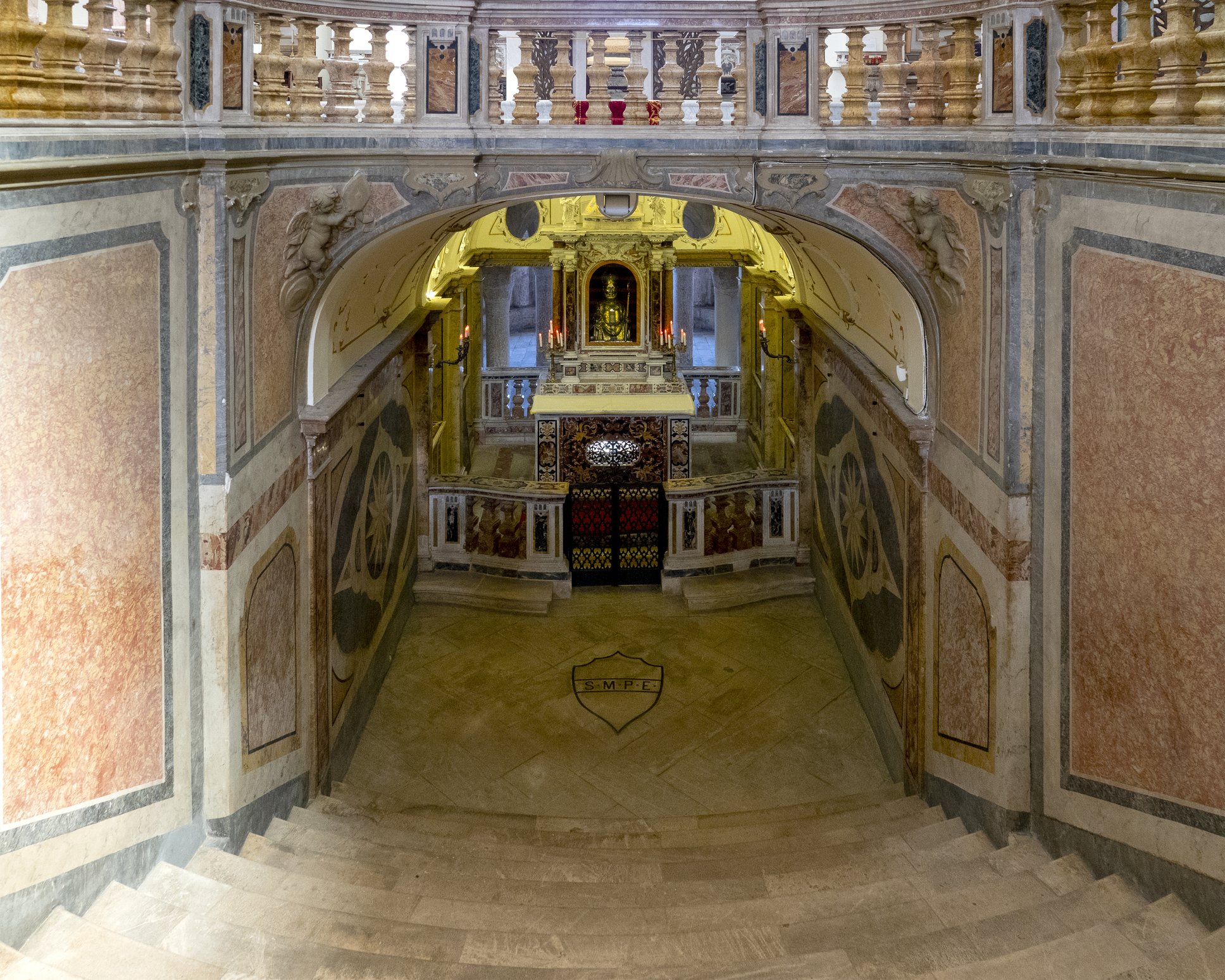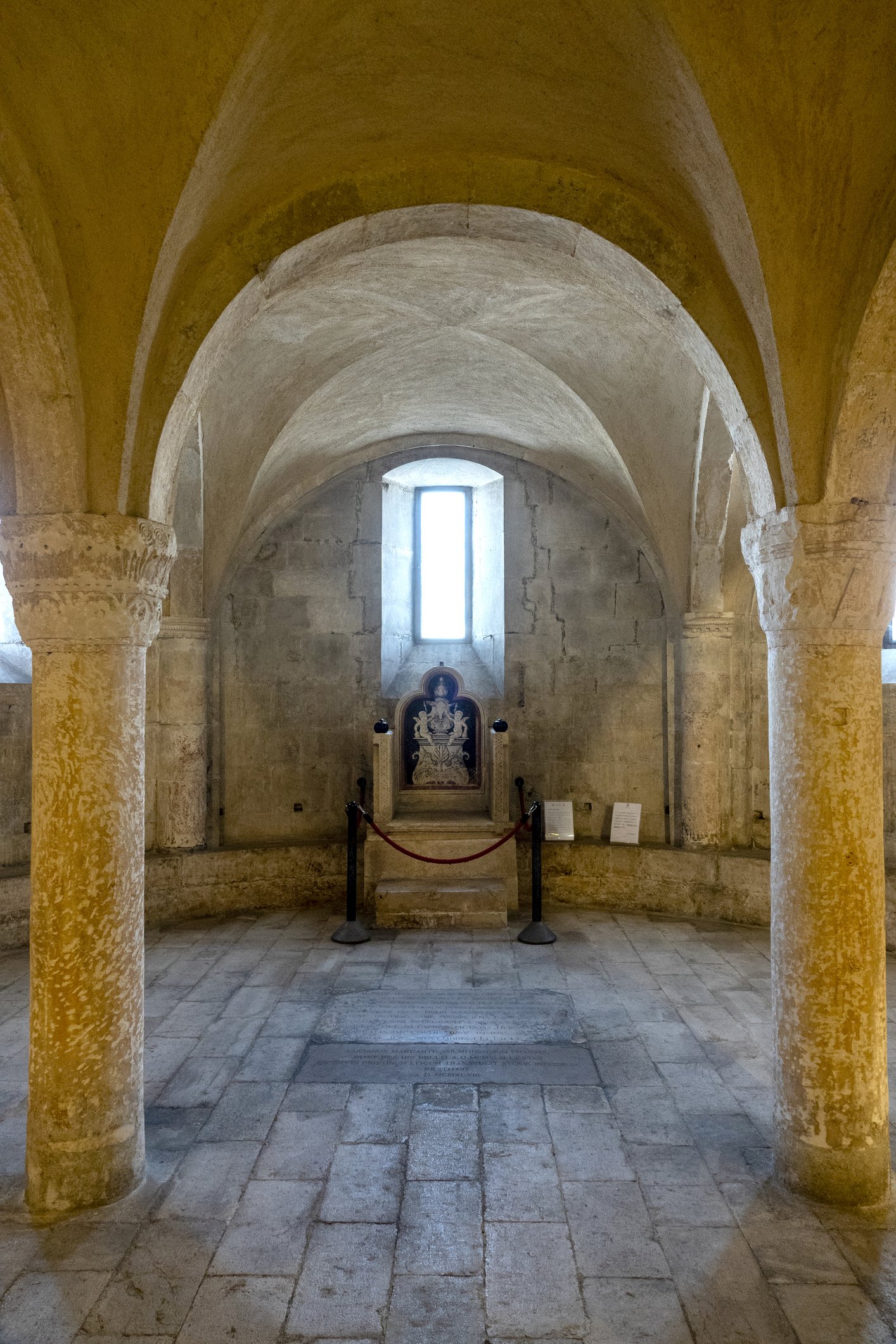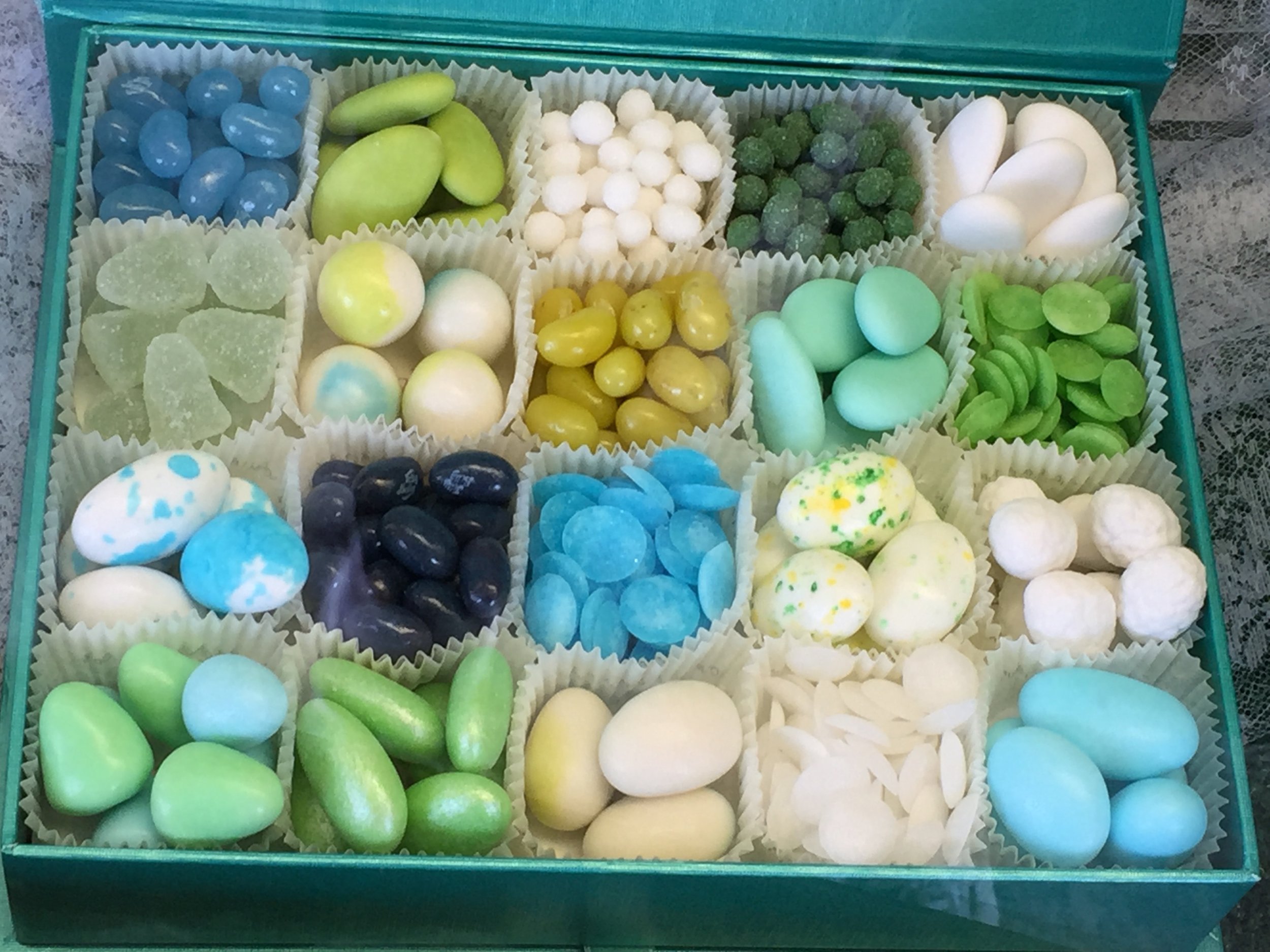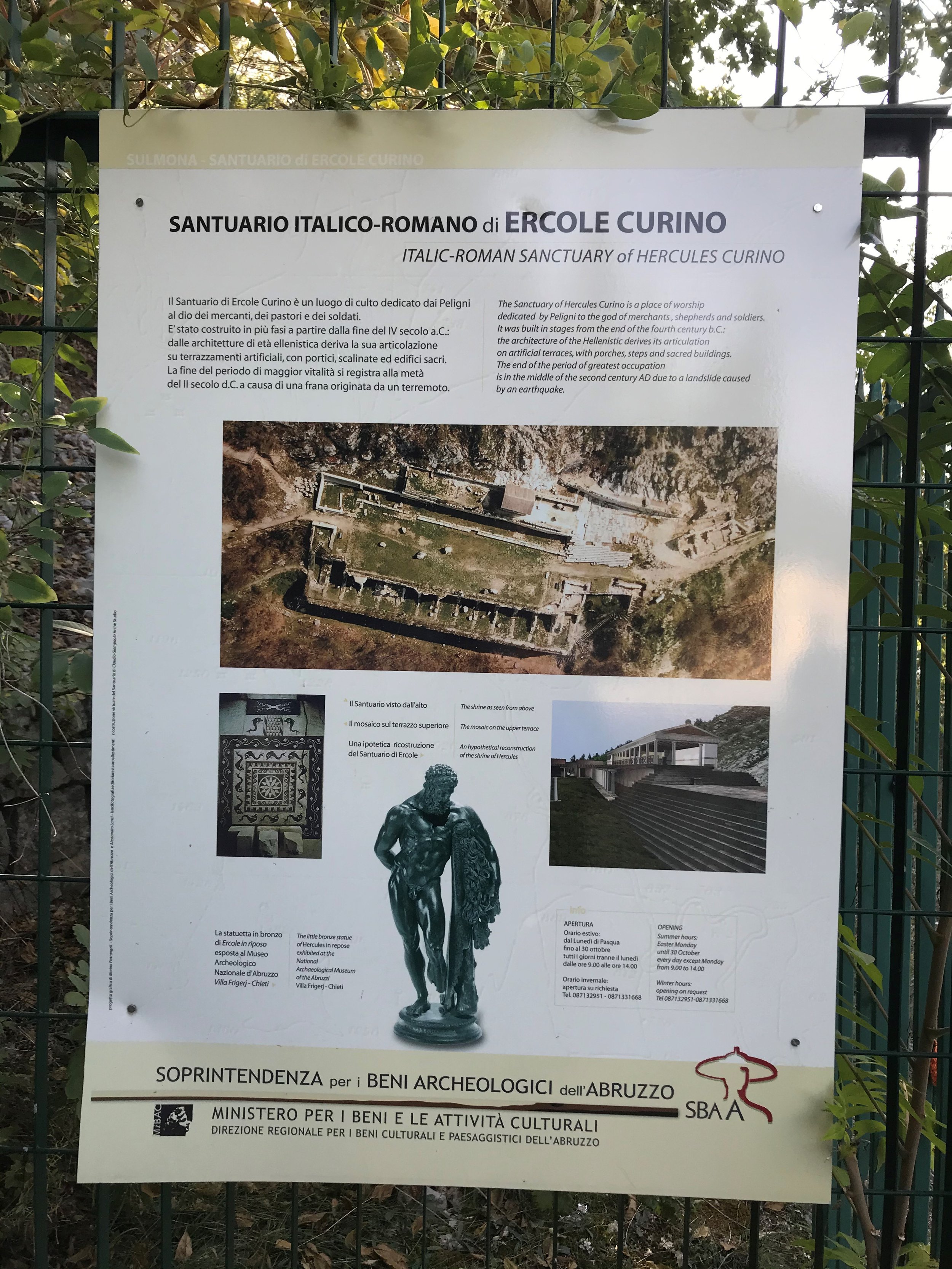Abruzzo
From the Founder: When I write about Abruzzo, I write about my heart. This majestic region is home to three of my great-grandparents. My paternal roots are grounded in the rugged, rich mountains, air and soil. My family comes from a village deep in the Appenine mountains called Acciano. This is the land of shepherds, (few are left,) who still traverse the transumaza, the ancient paths from Abruzzo to southern Italy where the sheep graze and stay warm in the south as the winter snow drapes the mountain passes of the soaring Apennines. This is the land with its ancient Italic Tribes like the Samnite (Sabine) people, who welcomed ancient Greek, Egyptian, Phoenician, and Assyrian traders and who fought against but were conquered by the Ancient Romans in the 4th century B.C.E. Unlike other conquered people, due to the veracity of the Samnites and the other Italic tribes who fought together, the Romans granted citizenship to these fierce fighters which was rare during the Roman Empire.
Abruzzo (which also included Molise) was later united under the Normans leaving behind great architectural treasures, artifacts, traditions and skills in these wild landscapes and some of the last of Italy’s wilderness. It was part of the Kingdom of Naples (under Spanish rule) in the 16th century, then the Bourbons until the unification of Italy in 1861. In other words, it has been impacted by many civilizations that left a rich trail of cultural gifts.
My experience with the Abruzzessi has been rooted in family connections. These experiences have taught me that the Abruzzessi are fiercely loyal to their own local people, rugged, resilient, hard-working, strategic and creative, and more so than other regions, emotionally rooted in and appreciative of the land.
One of the first questions an Abruzzesse will ask of newcomers, is, “Where are you from?” If you are from Abruzzo, you are more readily and warmly welcomed (vs from other regions). There is a fierce identification and pride in being Abruzzessi, first. In some cases, identifying first as being from Abruzzo is more important and meaningful than being identified as an Italian. I believe this is because for over 25,000+ years the people of this region have lived in and fought to preserve their land and their customs from multiple “invaders” -repeatedly. So a bit of skepticism and caution are also built in for self-defense and survival. But once you are “in,” i.e., accepted, the day-to-day interactions are most joyful and serene.
The Abruzzessi are also incredibly resilient. They have experienced devastation from numerous earthquakes for centuries which are common to this region. Two earth plates are constantly pushing up against each other, under the surface, which gave birth to the Appenine mountains over the centuries. About every 300 years powerful shakes leave their mark. The most recent was a crushing quake on 6 April 2009 at 3:30 AM centered in and around L’Aquila. Nearly 400 perished. Many structures are still undergoing renovations. Cranes are a common site on the skyline of cities like L’Aquila. Some landmarks and historical structures will never be rebuilt and will remain only in our memories. But typical to the spirit of the Abruzzessi, they carry on, despite devastation and loss.
This is a region where you can truly get a feel for old Italy. It has not been tainted as much by globalization as its neighboring regions. I encourage you to visit and explore the land and its people.
Abruzzo is divided into four provinces. The four provinces of Abruzzo are:
Teramo
Pescara
L'Aquila
Chieti
Two-thirds of Abruzzo is mountainous and an outdoor person’s paradise with four national and regional parks, rugged mountains, and of course the pristine shoreline along the Adriatic. I think that this is one of the most beautiful regions in all of Italy due to its natural wonders. The Appenine mountains sparkle at sunset, year-round. The rolling, golden wheat fields are prolific (home to Dececco pasta), and vineyards bearing the famous Montepulciano and Trebbiano grapes are part of many residential gardens.
The national and regional parks offer hiking trails and vistas that will take your breath away.
Learn more about the parks at these links:
www.parcoabruzzo.it: The National Park of Abruzzo
www.parcomajella.it: The Majella National Park
www.gransassolagapark.it: Gran Sasso National Park
www.parcosirentevelino.it: Sirente Velino Regional Park
Abruzzo is rich with a ceramic tradition that began in the 17th century in Castelli and still flourishes. Castelli is a small mountain community you will thoroughly enjoy, especially if you plan to shop for some ceramics to bring or ship back to your home. Castelli is certainly an historic village to visit while in Abruzzo.
Castelli Artisan, Photo by Giuseppe Masci
Copper: Abruzzo also has a rich and ancient tradition of copper production dating back to the pre-Roman and Roman eras. The indigenous populations, including the Samnites, are believed to have mined and smelted copper in the region. They used copper for various tools, weapons, coins, ornaments, building construction and cookware. After the fall of the Roman Empire, copper mining in Abruzzo continued, albeit on a smaller scale. The metal remained important for local craftsmen and artisans who used it to create jewelry, religious artifacts, and other decorative items. Copper production in Abruzzo saw a resurgence during the Renaissance and early modern period. The region's copper mines attracted the interest of various European powers, including the Spanish and the Papal States. Copper from Abruzzo was used for coinage and for creating copperplate engravings. The 19th century witnessed a significant increase in copper mining and metallurgy in Abruzzo. Technological advancements allowed for more efficient extraction and processing of copper ores. This period also saw the opening of new mines in the region. Copper production in Abruzzo continued into the 20th century, with several mines operating in the region. However, by the mid-20th century, the industry began to decline as cheaper sources of copper became available from other parts of the world. Today, copper production in Abruzzo is no longer a major industry. Many of the historic copper mines have closed, and the focus has shifted to other economic activities. However, remnants of the region's copper mining heritage can still be found in the form of abandoned mines, historical sites, and museums. While copper production in Abruzzo may not be as prominent as it once was, the historical significance of the industry is still remembered and celebrated in the region's cultural heritage.
The wine industry in Abruzzo: Abruzzo is renowned for its vineyards and winemaking traditions. The region primarily cultivates the Montepulciano d'Abruzzo varietal, which produces red wines known for their deep color, robust body, and rich, fruity flavors. Trebbiano d'Abruzzo is another important grape variety, typically used for white wines.
Abruzzo is divided into several wine regions, with the most notable being Terre di Chieti, Terre Aquilane, and Terre Teramane. Terre Teramane is particularly renowned for producing high-quality Montepulciano d'Abruzzo wines, including those labeled as Montepulciano d'Abruzzo Colline Teramane DOCG, the highest quality designation in the region.
Wineries: The region is home to numerous wineries, ranging from small, family-run operations to larger, commercial producers. These wineries often offer tastings and tours to visitors, providing an opportunity to learn about Abruzzo's winemaking traditions and sample its wines. Many wineries have tasting rooms and restaurants where visitors can enjoy local dishes paired with regional wines.
Over the years, there has been a concerted effort in Abruzzo to improve wine quality. Winemakers have been investing in modern winemaking techniques and technology to produce higher-quality wines that compete on the international stage.
Here are a few wineries that are known for producing excellent wines in Abruzzo:
Masciarelli: Masciarelli is one of the most renowned wineries in Abruzzo, known for its Montepulciano d'Abruzzo wines. The estate is located in the province of Chieti and has gained international recognition for its high-quality wines.
Emidio Pepe: This family-owned winery, located in the town of Torano Nuovo in the Teramo province, is famous for its traditional winemaking methods and exceptional Montepulciano d'Abruzzo and Trebbiano d'Abruzzo wines.
Cantina Tollo: Cantina Tollo is a cooperative winery that has been producing wines in Abruzzo for over 50 years. They offer a wide range of wines, including Montepulciano d'Abruzzo and Pecorino.
Valle Reale: Located in the Gran Sasso National Park, Valle Reale is known for producing high-quality Montepulciano d'Abruzzo wines. They focus on sustainable and organic viticulture.
Cirelli (Azienda Agricola Cirelli): This biodynamic winery is located in the Teramo province. They produce a variety of wines, including Montepulciano d'Abruzzo and Pecorino, and are known for their commitment to environmentally friendly practices.
Farnese Vini: Farnese Vini is a well-established winery with several vineyards in different regions of Italy, including Abruzzo. They produce a range of wines, and their Fantini line includes some popular options.
Cataldi Madonna: Situated in the Teramo province, this winery is known for its Montepulciano d'Abruzzo and Trebbiano d'Abruzzo wines. They focus on traditional winemaking techniques.
Tenuta Ulisse: Tenuta Ulisse is located in the province of Teramo and produces a range of wines, including Montepulciano d'Abruzzo and Pecorino. They have gained recognition for their modern approach to winemaking.
Agrippino - during the harvest
Trabocchi - (singular: trabocco) are traditional fishing structures found along the Adriatic coast of Italy, particularly in the regions of Abruzzo, Molise, and Apulia. These unique and picturesque wooden fishing platforms are an iconic symbol of the coastal culture in this part of Italy. They are ingeniously designed to capture fish as they swim near the shore. Large nets are suspended from the wooden framework, and a system of winches and pulleys allows fishermen to lower and raise these nets into the sea. When a school of fish is spotted, the nets are lowered, and then, with the help of a quick and coordinated movement, the fishermen raise the nets to catch the fish. Trabocchi have a long history in the region, dating back to the 18th century. They were developed as a way for fishermen to make a living from the often treacherous and unpredictable Adriatic Sea. Trabocchi are not just functional fishing tools; they are also cultural landmarks. They have become symbols of the coastal traditions and culinary heritage of the region. Efforts are being made in Abruzzo to preserve and protect these traditional fishing platforms as part of Italy's cultural heritage. Plans are in place to request UNESCO protection for these cultural treasures.
Trabocchi, Photo by Luca Lorenzelli
Saffron- Grown in Abruzzo
One of the natural treasures of Abruzzo is the spice saffron, which grows wild in the mountains. It is the world’s most expensive spice and can be found in most stores and markets throughout the region. While it's challenging to pinpoint the exact duration of saffron cultivation in Abruzzo, it has certainly been grown there for many centuries. The tradition continues today, and saffron from Abruzzo is highly regarded for its quality and flavor.
Saffron, the most expensive spice in the world, grown in Abruzzo.
The transumanza. Sheep have always been an important part of the Abruzzo way of life and economy from ancient times with the Romans and today. Livestock, particularly sheep, were moved from lower pastures in the winter to higher elevations in the summer to find better grazing grounds. This movement of the sheep is called the transumanza. It became a well-organized essential part of the Italian agricultural system during the Medieval and Renaissance periods. Even the Medici entered the sheep business and built a fortress near San Stefano to observe and protect the shepherds and their sheep.
The Apennine Mountains, which run down the length of Italy, provided a natural pathway for the movement of livestock between the north and south. Shepherds and their flocks would travel along established routes known as "tratturi" and "bracci" that connected different grazing areas. You can still see many of the well-worn paths today from the roads above the valley floors.
The transumanza in Abruzzo, shepherds, sheep and Maremmano-Abruzzese sheepdogs, Photo by Wessel Cirkel
Economic Importance: The transumanza played a vital role in the economies of both the northern and southern regions. The wool and meat produced by the sheep were valuable commodities, and the movement of sheep helped to distribute wealth between regions. The shepherds' migrations also brought cultural exchanges as they interacted with different communities along the way.
Decline: The industrialization of agriculture, changes in land use, and urbanization in the 19th and 20th centuries led to a decline in the transumanza. As more land was converted for other purposes and transportation improved, there was less need for seasonal migrations. Modern farming techniques also changed the way livestock were managed.
Cultural Heritage: Despite the decline, the transumanza remains an important part of Italy's cultural heritage, in Abruzzo and other regions. The traditional routes, landscapes, and communities associated with the transumanza are recognized for their historical and cultural value.
Revival and Preservation: In recent years, there has been a renewed interest in preserving and reviving the transumanza as part of Italy's cultural and rural heritage. Efforts have been made to document traditional routes, organize transumanza festivals, and promote sustainable agricultural practices.
Places We Recommend for You to Visit in Abruzzo
There are so many charming villages and towns to explore in Abruzzo. It is best to explore by car. Here are some favorites which offer a variety of experiences. It is by no means an exhaustive list. Talk to locals and ask for the names of towns they suggest you visit. Get in the car and go! Gems await. Here are a few.
L’Aquila
Basilicata di Santa Maria di Collemaggio in L’Aquila
L’Aquila is a cultural center. L’Aquila means the eagle. It rests 2300 feet above sea level on the slope of the Aterno river with the massive Gran Sasso mountain looming over the city. It is just one hour from the sea, 90 minutes from Rome and has the best access to skiing in the region for the winter. L’Aquila is a university town which makes it a vibrant, youthful yet tranquil town. Nearly all of L’Aquila’s sightseeing is in the historic center and accessible by foot.
What should you see? Start at the Basilica di Santa Maria di Collemaggio. You can park here and walk to the historic center of town after visiting this gorgeous site. The Basilica of Santa Maria di Collemaggio was founded by Pope Celestine V in the 13th century. Pope Celestine V, also known as Pietro Angelerio, was a hermit who was elected and crowned as pope in 1294 in the basilica. He chose to abdicate the papacy after only five months, making him one of the few popes to do so voluntarily. He then returned to his hermitage and founded the basilica as a symbol of penance and humility. The basilica is a stunning example of Gothic architecture and is known for its elegant facade and stunning rose window. It is also known for its role in the annual Perdonanza Celestiniana, a religious event that attracts pilgrims. Pietro da Morrone was the architect of this memorable basilica. Pope Celestine V was canonized as a saint in 1313, and his remains were placed in the basilica. This further increased the basilica's significance as a pilgrimage site.
Here are some highlights of the historic center:
Piazza del Duomo: The central square of L'Aquila, Piazza del Duomo, is surrounded by several important buildings. The most prominent is the Cathedral of San Massimo (Basilica di San Massimo), a stunning example of Gothic architecture. The bell tower, known as the Torre Campanaria, is also a notable feature of the square. This was heavily damaged during the earthquake of 2009. Many of the facades of buildings remain on the piazza but the structures behind them are gone, like a TV set in Hollywood.
Fontana delle 99 Cannelle: This unique fountain, also known as the Fountain of the 99 Spouts, is one of L'Aquila's most iconic landmarks. It dates back to the 13th century and features 99 small spouts, each representing a different noble family of the city.
Castello dell'Aquila: The Castle of L'Aquila is a medieval fortress that dates back to the 16th century, built by the Spanish who controlled the region during that period. Although it suffered significant damage during the earthquake in 2009, it remains an important historical site in the city and was recently reopened to the public. Inside you’ll find a fabulous museum.
Church of San Bernardino: This church is a fine example of Renaissance architecture and is dedicated to Saint Bernardino of Siena. Its facade is adorned with intricate decorations.
Palazzi Nobiliari (Noble Palaces): L'Aquila's historic center is dotted with elegant noble palaces, such as Palazzo Margherita, Palazzo Cappa, and Palazzo Dragonetti. These palaces often feature beautiful architectural details.
Food: Exploring L'Aquila's historic center gives you the opportunity to savor the local cuisine, including dishes like "spaghetti alla chitarra," a pasta unique to the region. The name "chitarra" refers to the traditional tool used to make this pasta, which resembles a guitar string cutter. “Arrosticini" skewers of grilled lamb or mutton are also commonly found on menus in L’Aquila.
Museo Nazionale d'Abruzzo: While not strictly part of the historic center, this museum is nearby and houses a rich collection of art and artifacts that showcase the history and culture of the Abruzzo region.
Amiternum: Just outside of L’Aquila is an historic Roman colosseum complete with an entertainment center, remnants of the ancient Roman road, and ruins of a theater and baths. Buses leave Collemaggio Terminal to visit the site nearly every day.
There will be a free shuttle bus that leaves on the hour from
Collemaggio Terminal from the 1st August 2023
Monday - Wednesday - Thursday - Saturday - Sunday: 8.15; 9.15; 10.15; 11.15; 12.15;
Tuesday and Friday: 2.15pm; 3.15pm; 4.15pm; 5.15pm; 6.15pm;
It will also stop at Fontana Luminosa, at the Fontana delle 99 Cannelle on state road 80 and then will reach the Roman theatre of Amiternum and subsequently that of the amphitheater, with relative stops to allow the visit, and return to the Terminal.
Amiternum's history reflects the rise and fall of many ancient Roman cities in Italy. While it was once a thriving Roman colony, it gradually declined and was eventually abandoned in the 5th century. The ruins of Amiternum stand as a testament to its ancient past and are a part of the historical and archaeological heritage of the L'Aquila region. If you are a fan of archeology, don’t miss this site.
Amiternum, an excavated ancient Roman Colosseum and entertainment complex, just outside of L’Aquila.
Vasto
Vasto is a beautiful coastal town located in the Abruzzo region of Italy. While Vasto itself is a treasure with its stunning views of the Adriatic Sea and well-preserved historic center, it also offers several hidden treasures and attractions for visitors to explore:
Vasto Old Town (Città Vecchia): The historic center of Vasto is a treasure in itself. Its narrow winding streets, medieval buildings, and beautiful piazzas make it a charming place to explore. Don't miss the Vasto Cathedral (Cattedrale di San Giuseppe), which dates back to the 18th century, and the Palazzo d'Avalos, a 15th-century castle with a beautiful courtyard.
Vasto Beaches: Vasto offers some of the most beautiful beaches along the Adriatic coast. The long sandy coastline is divided into different areas, including Vasto Marina and Punta Penna. These beaches have crystal-clear waters and are perfect for sunbathing and swimming.
Nature Reserves: The surrounding Abruzzo region is known for its natural beauty. The Punta Aderci Nature Reserve is a short distance from Vasto and offers hiking trails with breathtaking views of the coastline. It's a paradise for nature lovers and photographers.
Roman Baths (Terme Romane): Vasto is home to well-preserved Roman baths dating back to the 1st century AD. These baths are a testament to the town's ancient history and are open to the public.
Vasto Siren: In Piazza Rossetti, you can find a bronze statue known as the "Siren of Vasto." It's a representation of a mythical creature from Greek mythology and adds a touch of uniqueness to the town.
Vasto Jazz Festival: If you happen to visit in July, you might catch the Vasto Jazz Festival, an annual event that attracts jazz enthusiasts from all over Italy and beyond.
Grotta del Saraceno: Just south of Vasto, you'll find the Grotta del Saraceno, a sea cave that can be visited by boat. It's named after a legend involving Saracen pirates.
Art and Museums: Vasto has several art galleries and museums, including the Palazzo d'Avalos, which houses the Civic Museum with a collection of paintings, sculptures, and archaeological artifacts.
Local Festivals: Like many Italian towns, Vasto has a calendar of festivals and events throughout the year, celebrating everything from food and wine to religious traditions. Check the local event calendar to see if there's a festival happening during your visit.
The treasures of Vasto and the Abruzzo region are not just limited to these attractions. Part of the charm is discovering the lesser-known gems and experiencing the warm hospitality of the locals.
Vasto, Photo by K. Bortolini
Sulmona
The Aqueduct in Sulmona in the main piazza, Photo by Gunold
Sulmona is a very picturesque town located in Abruzzo, just 50 minutes from L’Aquila. It is known for its rich, ancient history, charming medieval architecture, and beautiful surrounding countryside. It is the birthplace of the 1st-century poet Virgil and was a key trading post for the ancient Romans. This is one of my favorite places to visit in Abruzzo. Here are some highlights of Sulmona:
Piazza Garibaldi: This is the main square in Sulmona and the heart of the town. It's a beautiful place to stroll, surrounded by cafes and historic buildings. In the center of the square, you'll find a statue of Giuseppe Garibaldi, an Italian national hero. It's a great place for a leisurely walk or for taking photos. The piazza serves the community for large gatherings and religious celebrations, especially during Easter. You will notice an ancient Roman aqueduct that frames one end of the piazza where a weekly outdoor market can be found. This is an impressive sight and a testament to the town's rich history. The Aqueduct of Sulmona, also called the Aqueduct of Saint Panfilo, is an impressive historical structure that runs through the town.
Churches: Sulmona is home to several beautiful churches. My two favorites are The Cathedral of San Panfilo for its facade and interior and The Church of Santa Maria della Tomba. The Cathedral of San Panfilo continues to be a symbol of faith and a testament to the architectural and artistic achievements of different periods in history. It is an important site for both religious and historical tourism in Abruzzo. It is dedicated to Saint Panfilo, who is the patron saint of Sulmona. The history of the cathedral dates back to the medieval period, and it has undergone several renovations and reconstructions over the centuries. The origins of the cathedral can be traced back to the 8th century. The church that preceded the current cathedral was likely a small, simple structure. It is believed to have been constructed on the site where Saint Panfilo, a local Christian martyr, was buried.
The Church of Santa Maria della Tomba dates back to the 13th century. It was built on the site of an ancient Roman temple dedicated to Jupiter. The name "Tomba" (tomb) refers to a Roman tomb that was discovered in the vicinity. The Church of Santa Maria della Tomba is a fine example of Romanesque-Gothic architecture. Inside, visitors can admire its beautiful frescoes, including some by the renowned artist Francesco di Montereale. The church has served as a place of worship for centuries and is still an active parish church today. It plays a significant role in the religious and cultural life of Sulmona. The church is also known for hosting important religious events and processions, especially during Holy Week. The "Madonna che scappa in piazza" (Madonna who runs to the square) is a famous annual event in Sulmona where a statue of the Madonna is carried through the town, on the shoulders of several men, symbolizing her search for the resurrected Christ.
Confetti: Sulmona is famous for its sugared almonds called "confetti." You can visit local shops to see how they are made and, of course, purchase some as souvenirs. Confetti is a traditional gift provided to guests at weddings not just in Sulmona but all over Italy. The tradition dates back to ancient Roman times.
Museums: The Museo dell'Arte Confettiera is a unique museum dedicated to the art of making confetti. Additionally, the Civic Museum houses a collection of art and historical artifacts from the region.
Parks and Nature: The surrounding countryside is beautiful, with opportunities for hiking and enjoying nature. The Majella National Park is nearby and offers a chance to explore the rugged Apennine Mountains. In the mountains just outside of Sulmona, you can drive to the ruins of the Temple of Hercules which has a rich history dating back to the ancient Romans. The ruins are small but impressive. (See photos below.)
Easter Celebrations: Sulmona is particularly famous for its elaborate Easter celebrations, including the "La Madonna che Scappa in Piazza" (Madonna running through the square) procession. This tradition dates back several centuries and is a unique cultural experience.
Architecture: Stroll through the town's historic center to admire its well-preserved medieval architecture, with narrow winding streets and colorful buildings.
Festivals: Sulmona hosts various festivals and events throughout the year, celebrating its culture, history, and traditions. These can include music festivals, food festivals, and more.
Easter in Sulmona, in 2023, La Madonna che scappa.
In the photos above you will see the open market in Sulmona, colorful almond “confetti;” the mosaic floor preserved at the Temple of Hercules in the Majella mountains near Sulmona and the poster at the entrance to the Temple of Hercules; “arrosticini,” which are roasted lamb skewers; and a “prezentosa, ” a sterling silver pendant traditionally presented to a shepherd’s betrothed as a sign of his love before leaving on the transumanza. Today the prezentosa’s are a very special gift and keepsake among loved ones, unique to Abruzzo.
Pescara
Pescara beach front and the Lungomare walkway
Pescara is best known for being a fabulous beach resort town on the Adriatic with sandy beaches. The city's long coastline is lined with beach clubs, bars, and restaurants, making it a popular destination for sunbathing and swimming during the summer months. Here are some highlights of Pescara:
Ponte del Mare: This iconic pedestrian bridge spans the Pescara River and is a modern architectural landmark in the city. It's especially beautiful when illuminated at night.
La Pineta: This is a large, lush pine forest along the beachfront that provides a peaceful escape from the city's hustle and bustle. It's a great place for a leisurely stroll or a picnic.
Piazza Salotto: This is the main square in Pescara and a hub of activity. It's surrounded by shops, cafes, and restaurants, making it a perfect spot for people-watching.
Museo delle Genti d'Abruzzo: This museum is dedicated to the culture, history, and traditions of the Abruzzo region. It's a great place to learn about the local heritage.
Cascella Museum: Located in the artist's home, this museum is dedicated to the works of Francesco Paolo Michetti, a famous Italian painter and sculptor. It's a must-visit for art enthusiasts.
Nightlife: Pescara has a vibrant nightlife scene, with bars and clubs that come alive in the evening. The beachfront promenade is a popular spot for evening walks and drinks with a view.
Events and Festivals: Pescara hosts various events and festivals throughout the year, including music festivals, food festivals, and cultural celebrations. The city comes alive with a festive atmosphere during these times.
Waterfront Promenade: Pescara boasts a beautiful seafront promenade, Lungomare, where you can take a leisurely stroll, rent a bike, or simply enjoy the sea views.
Shopping: Via Nicola Fabrizi is the main shopping street in Pescara, offering a mix of boutiques, shops, and local markets where you can find unique souvenirs and products.
The pedestrian foot bridge in Pescara, the Ponte del Mare.
Chieti
Chieti, Photo by Adamico
Chieti sits atop a steep mountain overlooking the Adriatic with the Gran Sasso looming behind. It houses one of my favorite museums in Abruzzo, the National Archaeological Museum of Chieti. Chieti is a destination for travelers interested in the rich cultural history of Abruzzo in addition to experiencing a vibrant university town. Chieti’s history dates back to the ancient Samnites, an Italic people who inhabited the region. Like so many ancient tribes, it was later conquered by the Romans in the 4th century B.C.E. and became an important Roman town. Throughout the centuries, it has always been an important center for trade and culture. Chieti's historical center features numerous Renaissance and Baroque architectural gems.
Here are the highlights of Chieti:
Duomo di San Giustino: This is a stunning Baroque cathedral and the main religious landmark in Chieti. It features an impressive façade and houses several important religious relics.
Villa Comunale: This beautiful park in the heart of the city is a great place to relax. It features lush greenery, fountains, and statues, making it a peaceful oasis.
National Archaeological Museum of Chieti: This museum showcases a vast collection of archaeological finds from the region, including artifacts from the ancient Samnites, Greeks, Romans, Assyrians, Egyptians and other civilizations that inhabited or visited the area. It houses a replica of the Il Mistero del Guerriero di Capestrano, (The Mystery of the Warrior of Capestrano) dug up near the town of Capestrano in 1934. (The original statue is housed in the National Archaeological Museum of Naples.)
This statue is one of the most mysterious artifacts in Abruzzo due to its size and the design of its wide-brimmed hat that looks like a sombrero. The sculpture is believed to date back to the 6th century B.C.E. and is associated with the ancient Italic people known as the Samnites (Sabines.) While it is commonly referred to as a warrior, some scholars have suggested that it could represent a religious or mythological figure. The Warrior of Capestrano is a symbol of the rich cultural heritage of the Abruzzo region and is often featured in local cultural events and celebrations. In time, archeologists will be able to shed some more light on its meaning.
Teatro Marrucino: Chieti's historic theater, Teatro Marrucino, is an architectural gem and a venue for various cultural events, including concerts and performances.
Santa Maria dei Civitella: This medieval church is perched on a hill overlooking Chieti and offers panoramic views of the city. It's a picturesque spot and an important historical site.
Chieti War Cemetery: This cemetery is a solemn reminder of the sacrifices made during World War II. It contains the graves of soldiers from various nations who lost their lives in the region.
Piazza Trento e Trieste: This lively square is the heart of Chieti's social and cultural life. It's surrounded by cafes, shops, and historic buildings and is a great place to soak in the local atmosphere.
The Warrior of Capistrano, 6th century B.C.E
Santo Steffano di Sassanio
Santo Stefano di Sessanio is a picturesque village located between Sulmona and L’Aquila. It has a rich history that dates back centuries, with origins rooted in the Medieval period. Santo Stefano di Sessanio was founded in the 11th century. It was originally a fortified village, strategically positioned on a hilltop to provide protection from invaders and marauders. The village was part of the Kingdom of Naples. During the Renaissance, Santo Stefano di Sessanio experienced a period of economic growth and cultural development. The village thrived as a center for trade and agriculture. Its well-preserved architectural heritage from this period includes buildings with stone facades, narrow streets, and a central square. Like many Italian villages of the time, Santo Stefano di Sessanio was ruled by various feudal lords. The Medici family, a prominent Italian dynasty, held control over the village for a time to preserve, expand and protect its investment in sheep’s wool.
Santo Steffano di Sassanio
Santo Stefano di Sessanio continued to be an agricultural and trading center until the 20th century. Its economy relied on farming, sheep farming, and the production of wool. As with many small villages in Italy, Santo Stefano di Sessanio faced a period of decline in the 20th century. Younger generations left in search of better economic opportunities in larger cities, leading to depopulation and the abandonment of some buildings.
In the early 21st century, Santo Stefano di Sessanio underwent a remarkable transformation. An Italian entrepreneur named Daniele Kihlgren initiated a project to restore and preserve the village's historic buildings and cultural heritage. The project aimed to create a sustainable and unique tourism destination. Many buildings were converted into boutique hotels, restaurants, and shops, attracting visitors from around the world.
The earthquake of April 6, 2009, caused significant damage to many towns and villages in the region, including Santo Stefano di Sessanio. Numerous buildings and historic structures were damaged or destroyed, and there were casualties in the area. Santo Stefano di Sessanio, with its well-preserved medieval architecture, was not spared from the destruction, and efforts were made to restore and rebuild the village in the years following the earthquake.
The restoration work in Santo Stefano di Sessanio aimed to preserve the village's historical and architectural heritage while making it more resilient to future seismic events. The earthquake served as a catalyst for the restoration and revitalization of this charming village, and it has since become a popular tourist destination, known for its unique beauty and cultural significance.
Today, Santo Stefano di Sessanio is renowned for its well-preserved medieval and Renaissance architecture, its stunning natural surroundings in the Gran Sasso and Monti della Laga National Park, and its role as a model for sustainable tourism and heritage preservation in Italy. It has become a popular destination for travelers seeking a glimpse of authentic Italian village life and history. The Italian government is encouraging people to come to Santo Steffano di Sassanio to make it “home.” If you are between 18-40 and would relish the idea of moving to Santo Stefano di Sessanio for 5 years to help turn it into a dynamic sustainable community, you can. You will be given a monthly grant for three years up to a maximum of 8 thousand euros per year, a house for symbolic rent and a one-off grant, up to a maximum of 20 thousand euros to start a business. This young person’s offer is aimed at all non-resident Italians, EU citizens, or citizens of third countries in possession of an EU long-term residence permit issued for an indefinite period.
Civitella del Tronto
Civitella del Tronoto, Photo by Borning
Civitella del Tronto is a historic town located in the Teramo province of Abruzzo. It is a hidden gem in the Abruzzo region, offering a blend of history, culture, and natural beauty. Here are some highlights of this picturesque town:
Fortress of Civitella del Tronto: The most notable attraction in Civitella del Tronto is its massive fortress, known as the Fortezza di Civitella. This fortress is the second largest fortress in Europe and played a significant role in various historical conflicts, including the Italian Unification. Visitors can explore its impressive walls, bastions, and underground passages while enjoying panoramic views of the surrounding countryside.
Historic Center: Civitella del Tronto has a charming historic center with narrow cobblestone streets, ancient buildings, and quaint shops. Strolling through the town's streets gives you a glimpse into its rich history and architectural heritage.
Sanctuary of Santa Maria dei Lumi: This beautiful sanctuary is a pilgrimage site and features a Baroque-style church. It's a serene place to visit and offers a sense of peace and spirituality.
Civic Archaeological Museum: For those interested in the history of the region, the Civic Archaeological Museum of Civitella del Tronto is worth a visit. It houses a collection of artifacts and historical items that provide insights into the town's past.
Ortona
Ortona, Photo by Ermess
Ortona is a coastal town, rich in its natural beauty, situated on the coast of the Adriatic Sea, in the province of Chieti. Ortona is known for its history, picturesque landscapes, and cultural significance. Ortona has a long and storied history dating back to ancient times. It was originally founded by the Romans and has seen various rulers and civilizations come and go over the centuries, including the Lombards, Normans, and Byzantines. The town's historical center is characterized by narrow streets, medieval architecture, and ancient churches.
Ortona is perhaps most famous for its role in World War II. In December 1943, the town was the site of a significant, brutal battle between the Allied forces, primarily Canadian troops, and the German army. The Battle of Ortona, also known as "Little Stalingrad" due to its intensity, resulted in heavy casualties on both sides. Ultimately, Canadian troops, specifically the 1st Canadian Infantry Division, emerged victorious in capturing the Italian town of Ortona from German forces. Today, there are several memorials and museums dedicated to this period of history in the town.
Visitors can also explore historic churches such as the Basilica of San Tommaso Apostolo and the Church of Santa Maria di Costantinopoli.

